#Austin Fredric Lutter
Explore tagged Tumblr posts
Photo
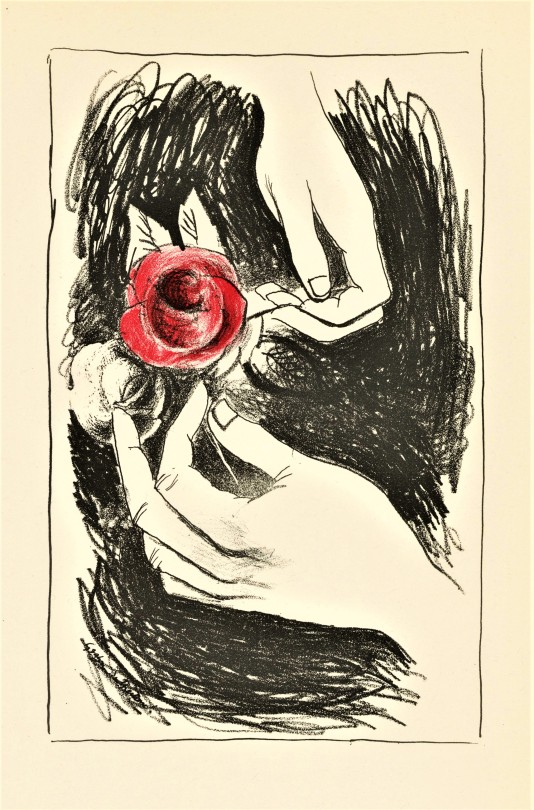


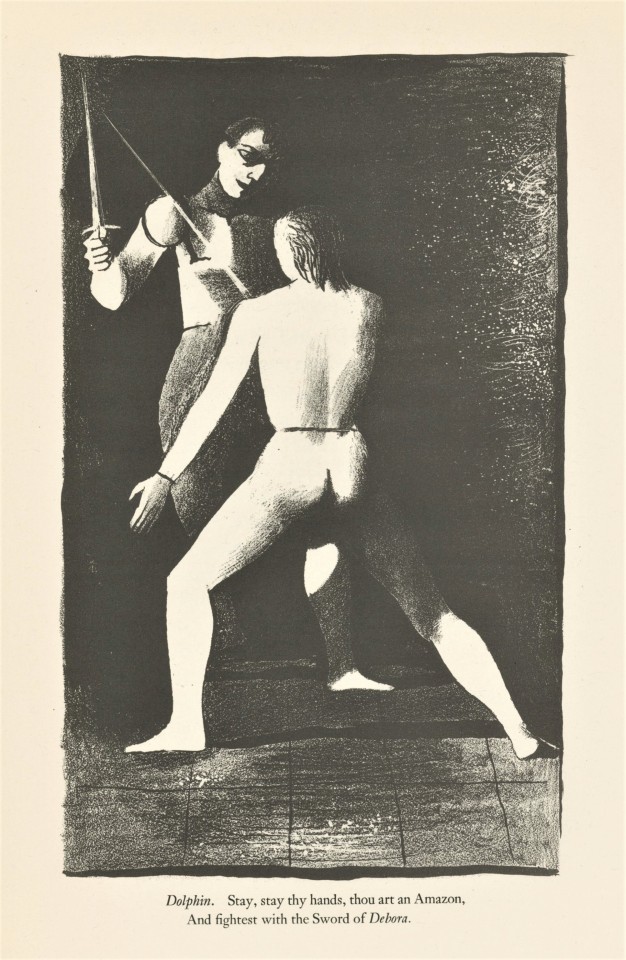




Shakespeare Weekend!
This week we present King Henry the Sixth: Part One, the first of the three part play, and is volume twelve of the thirty-seven volume The Comedies Histories & Tragedies of William Shakespeare, published by the Limited Editions Club (LEC) from 1939-1940.
Shakespeare’s authorship of these plays has been in question for some time, researchers believed to have found the hand of at least six other playwrights within the text. Modern advances in computer software have allowed Oxford researchers to analyze and compare patterns in the writing styles and they have determined that the Elizabethan playwright Christopher Marlowe (1564-1593) very likely co-authored the plays with Shakespeare. The plays were first acted in 1592. The second part was published anonymously in 1594, and the third part in 1595. All three parts were published in the folio of 1623.
This volume is illustrated with lithographs by English artist Graham Sutherland (1903-1980). Sutherland approached book illustration a bit differently. Where other artists wanted to create images that do not distract from the text, and appear harmonious with the text on the page, Sutherland believed that too much attention being paid to creating works that agree with the page will result in “Making the illustration merely decorative, and drained from any personality...” On his own approach to his illustrations he writes:
“I believe that a good illustration translates a story into pictorial equivalents. It should not be either subservient to, or superior to, the story which the author has to tell, but parallel with it.”
The volume in the set was printed in an edition of 1950 copies at the Press of A. Colish, and each was illustrated by a different artist, but the unifying factor is that all volumes were designed by famed book and type designer Bruce Rogers and edited by the British theatre professional and Shakespeare specialist Herbert Farjeon. Our copy is number 1113, the number for long-standing LEC member Austin Fredric Lutter of Waukesha, Wisconsin.

View more Limited Edition Club posts.
View more Shakespeare Weekend posts.
-Teddy, Special Collections Graduate Intern
#Shakespeare Weekend#William Shakespeare#King Henry the Sixth#Henry VI#Henry VI Part 1#Graham Sutherland#Limited Editions Club#Bruce Rogers#Lithography#Lithographs#Illustration#Fine press books#shakespeare#Herbert Farjeon#Press of A. Colish#Austin Fredric Lutter#teddy
79 notes
·
View notes
Photo
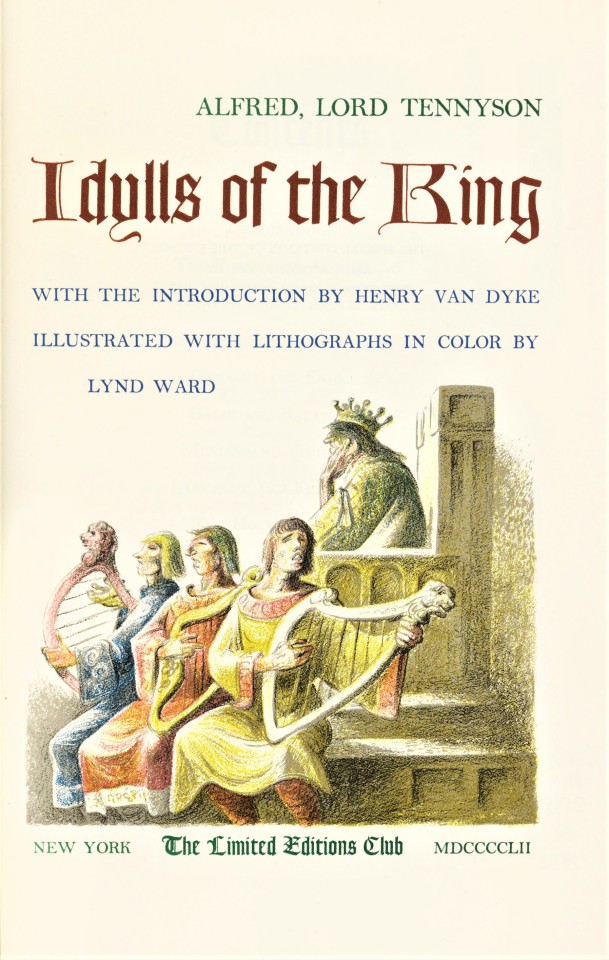

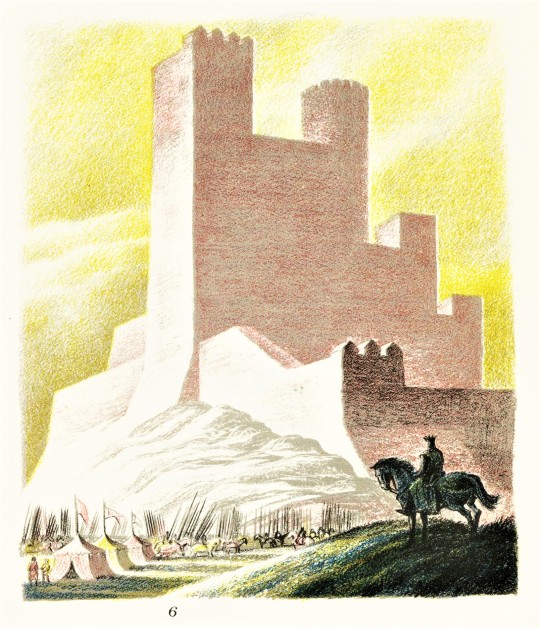

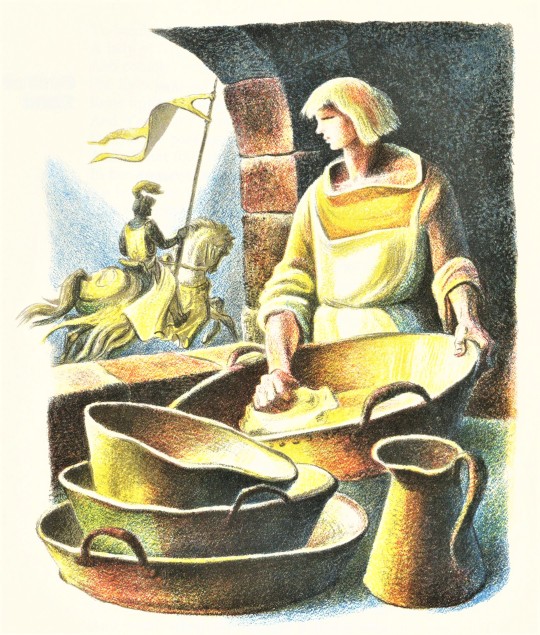




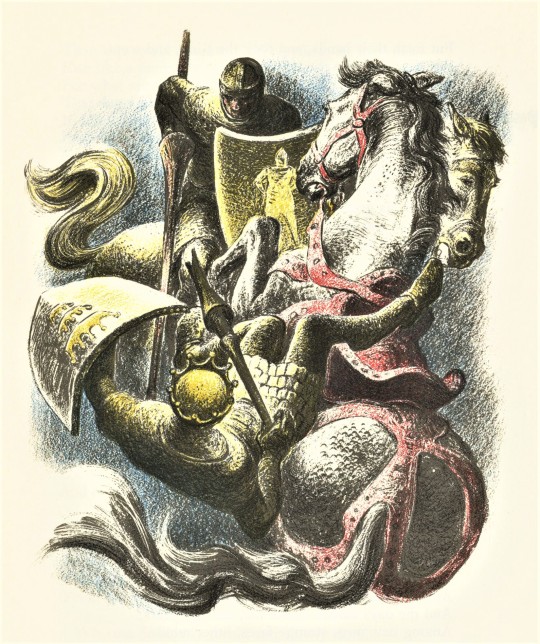
it’s Fine Press Friday!
This week we present another title illustrated by American artist and illustrator, Lynd Ward (1905-1985): Idylls of the King, by English poet Alfred Lord Tennyson (1809-1892), with introduction by Henry Van Dyke, and published in 1952 by the Limited Editions Club, in an edition of 1500 copies signed by the artist. Idylls of the King was first published as a cycle of twelve narrative poems, between 1859 and 1885.
Lynd Ward made over forty individual lithograph illustrations for this fine press edition. The illustrations have at least three colors each, Ward drew directly on the printing matrix, an incredible amount of work. This direct process is sometimes called autolithography. The term, autolithography aims to differentiate the direct process of an artist drawing on the printing matrix, a stone or plate, from lithographs that are made by transferring an image to the stone by other means. The lithographic plates were printed at the Duenewald Printing Corporation. The typographic layout was designed by Carl Purington Rollins in Bakersville types. Goudy Text was used for headers and the title. The type was printed at the Printing-Office of the Yale University Press in New Haven, where Rollins had been master printer from 1920 to 1948. It is quarter-bound in vermilion sheepskin and English buckram cloth. The cover is stamped in gold with a design by Lynd Ward. This book is a gift of Loryn Romadka, from the collection of Austin Fredric Lutter.

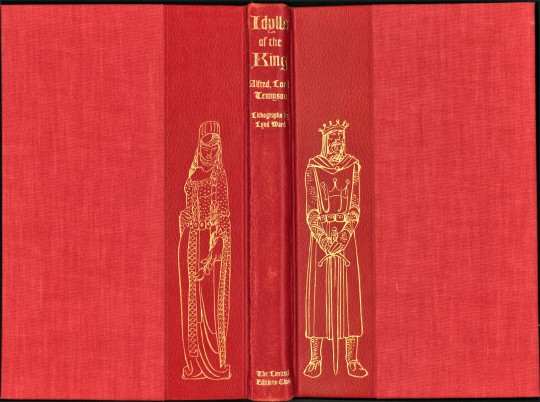
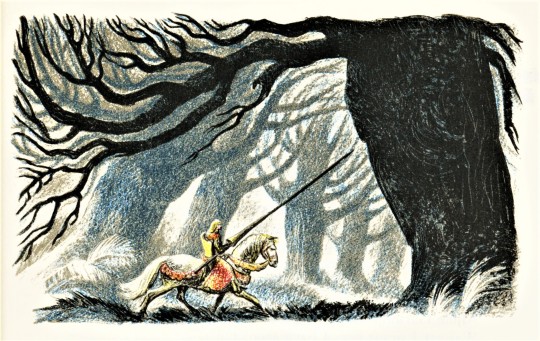
View other posts with work by Lynd Ward.
View more Limited Edition Club posts.
View more Fine Press Friday posts.
– Teddy, Special Collections Graduate Intern
#Fine Press Friday#Lynd Ward#Limited Editions Club#color lithographs#Lithography#Autolithography#Idylls of the king#Alfred lord tennyson#Carl Purington Rollins#Yale University Press#Duenewald Printing Corporation#Printmaking#Fine press books#book illustration#LEC#Bakersville#Goudy Text#Fine Press Fridays#Austin Fredric Lutter#teddy
71 notes
·
View notes
Text


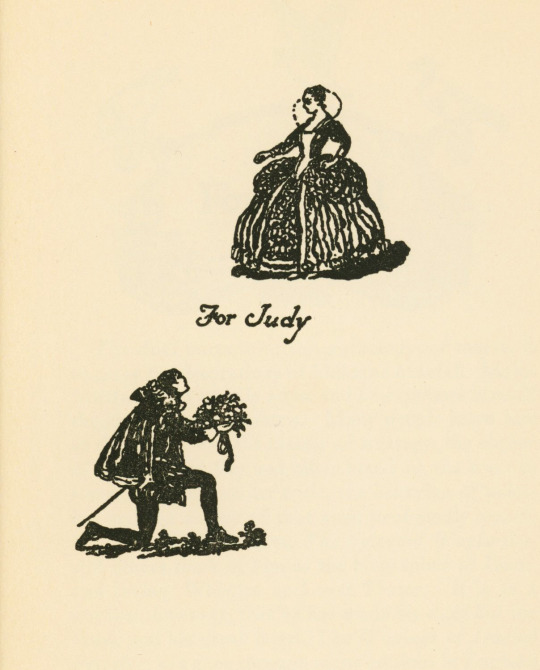
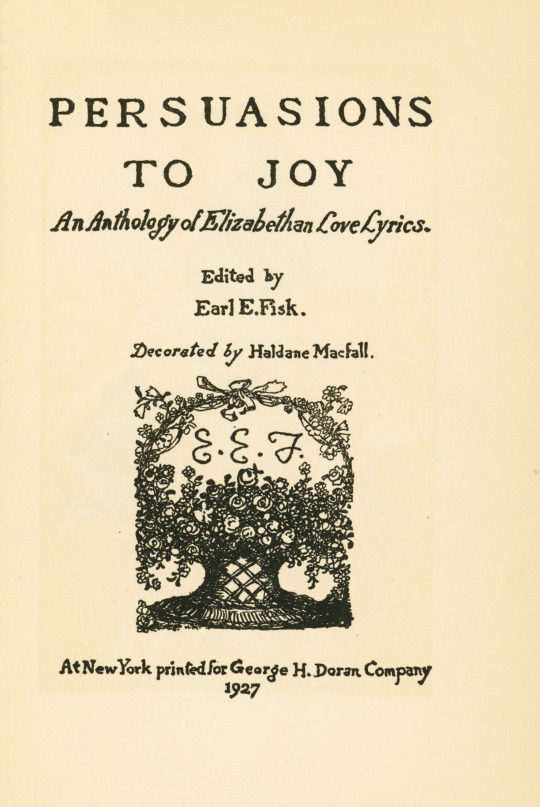

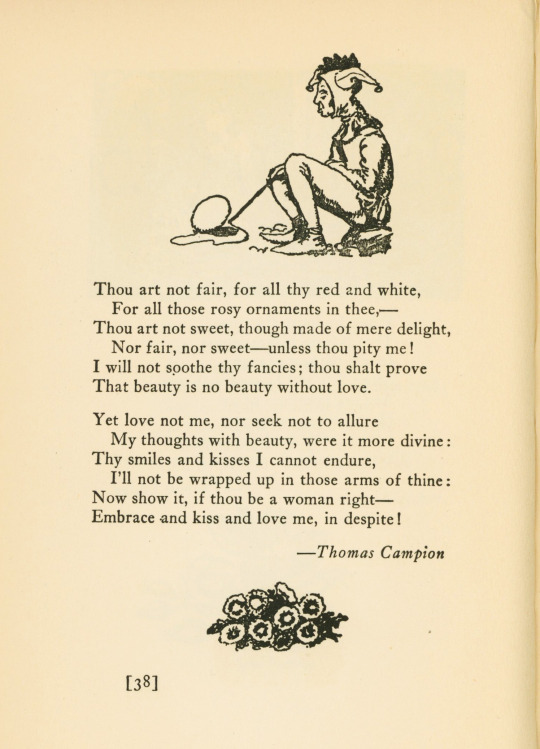
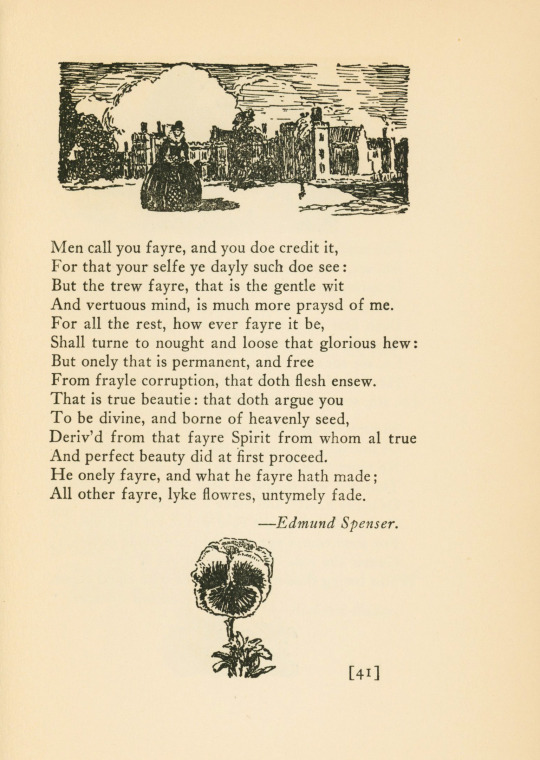

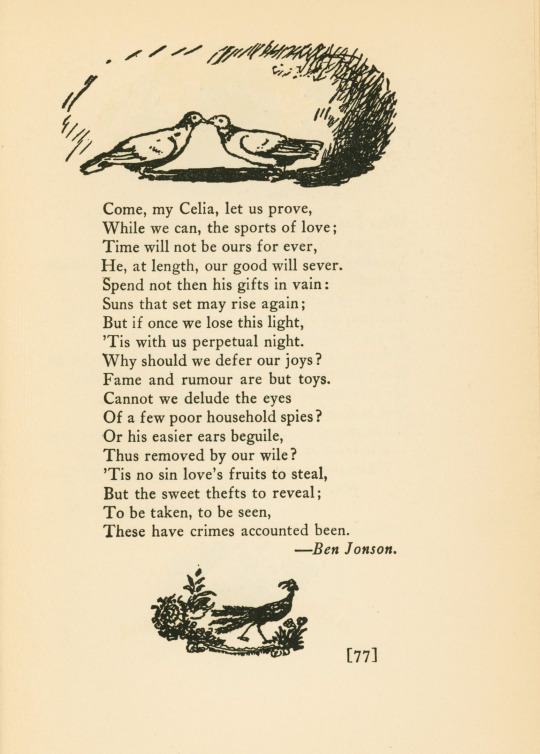
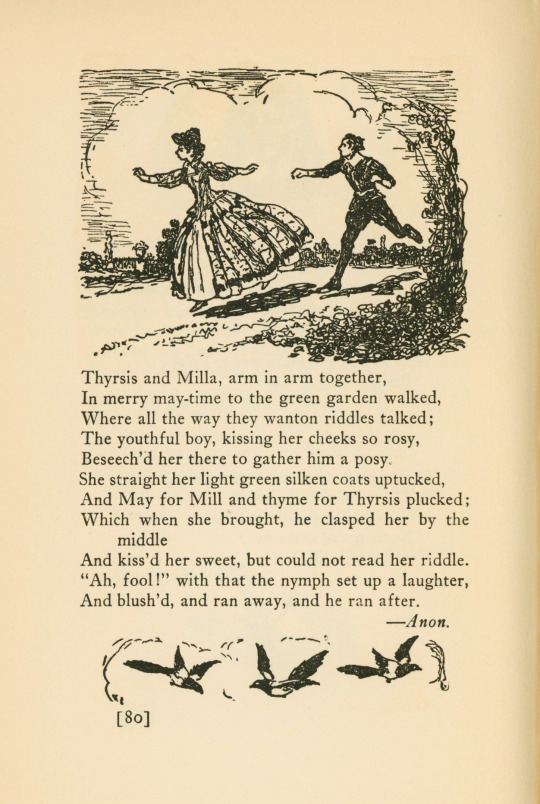
Publishers' Binding Thursday
This fine Thursday, I'm sharing a little love! This book is Persuasions to Joy: An Anthology of Elizabethan Love Lyrics, edited by British-born insurance agent and resident of Green Bay, WI Earl E. Fisk and decorated by British army officer, illustrator, and art critic Haldane Macfall. It was printed for George H. Doran Company in 1927.
This book is comprised of a group of Elizabethan love poems and some sweet illustrations, some of which include birds! It also includes an inscription from Fisk to Austin Lutter, whose name you may remember from our posts on the Limited Editions Club editions of Shakespeare's plays, since he is the one who donated them (and this book, and many others) to our collection. It reads: "For Austin Lutter who is not only a good insurance man but a lover of good books, this little book of love. Earl E. Fisk, January 5th, 1928."
The cover is covered in printed paper with a green cloth spine. The paper is printed with a rose and cross/spindle/wheel design in green and black. The cover appears to have also been decorated by Macfall.
View more Publishers' Binding Thursday posts.
-- Alice, Special Collections Department Manager
#Publishers' Binding Thursday#publishers' bindings#Persuasions to Joy#Elizabethan Love poems#Austin Fredric Lutter#Austin Lutter#Earl E. Fisk#Haldane Macfall#Alice#George H. Doran Company
35 notes
·
View notes
Photo



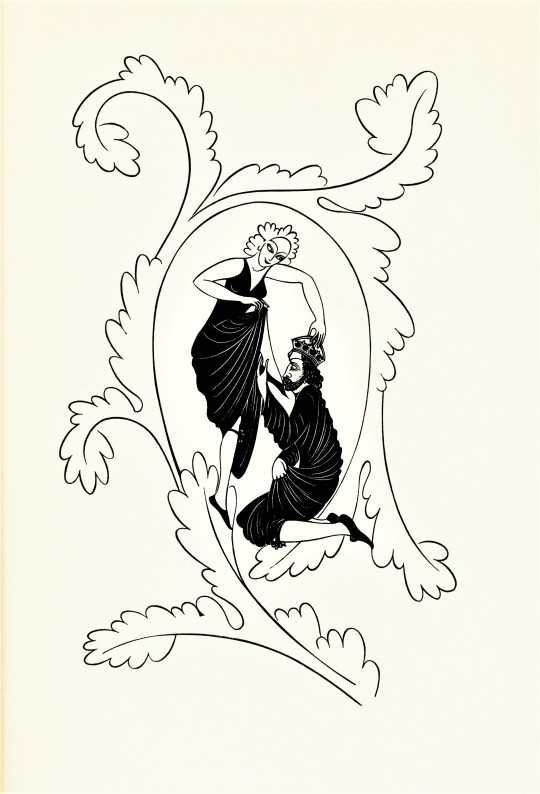




Shakespeare Weekend!
Volume 15 of the thirty-seven volume The Comedies Histories & Tragedies of William Shakespeare is Henry the Eighth, illustrated with wood engravings by one of the foremost designer/illustrators of the 20th century, Eric Gill, and published in 1939 by the Limited Editions Club (LEC) in an edition of 1950 copies. Henry VIII is a collaborative history play, written by William Shakespeare and John Fletcher, based on the life of Henry VIII, and first published in the Folio of 1623. It was during a performance of this play at the Globe Theatre in 1613 that a cannon shot employed for special effects ignited the theatre's roof, burning the original Globe building to the ground.
Gill’s wood engravings were printed directly from the wood by R. & R. Clark in Edinburgh. Gill writes that the play seemed to him to turn on the intrigue of Anne Boleyn:
So the first engraving shows the King enamoured of Anne. . . . The second shows a symbol of Henry’s doubts: the scales hold on the one side the charming Anne and on the other a lighted candle, symbolising the pure light of truth represented by Catherine. . . . The third picture shows the fall of Wolsey: a naked Cardinal seems to signify a breakdown of all earthly grandeurs. The fourth picture shows the coronation of Anne, symbolically taking place on the tomb of Catherine; and lastly the baptism of Elizabeth . . . sitting in the font, held up by the Bishop, under whose cloak is hiding the modern man of business with account book . . .
The volume in the set was printed in an edition of 1950 copies at the Press of A. Colish, and each was illustrated by a different artist, but the unifying factor is that all volumes were designed by famed book and type designer Bruce Rogers and edited by the British theatre professional and Shakespeare specialist Herbert Farjeon. Our copy is number 1113, the number for long-standing LEC member Austin Fredric Lutter of Waukesha, Wisconsin.

View other posts relating to Eric Gill.
View more Limited Edition Club posts.
View more Shakespeare Weekend posts.
View more posts with wood engravings!
-Teddy, Special Collections Graduate Intern
#Shakespeare Weekend#William Shakespeare#John Fletcher#Henry VIII#Anne Boleyn#Eric Gill#wood engravings#Limited Editions Club#LEC#Press of A. Colish#Bruce Rogers#Herbert Farjeon#teddy#Austin Fredric Lutter
34 notes
·
View notes
Photo
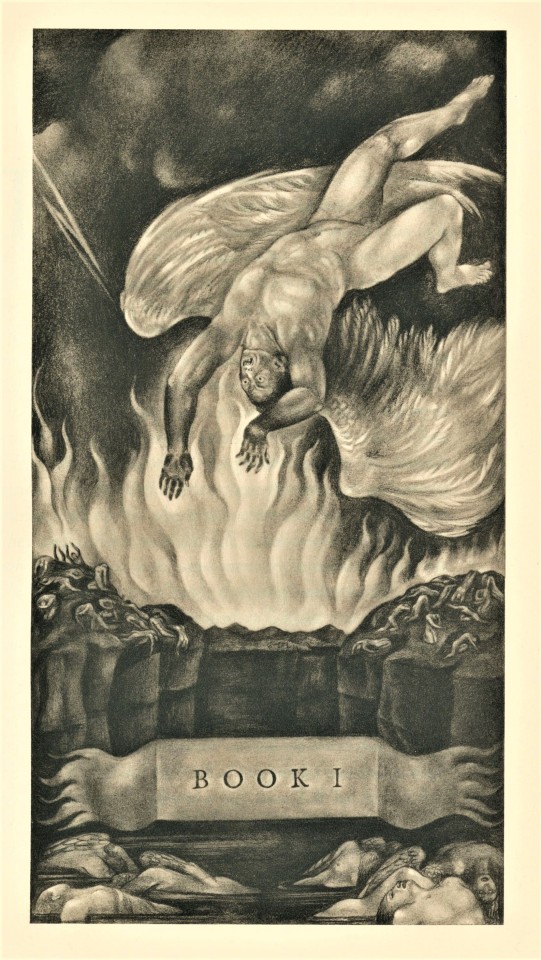
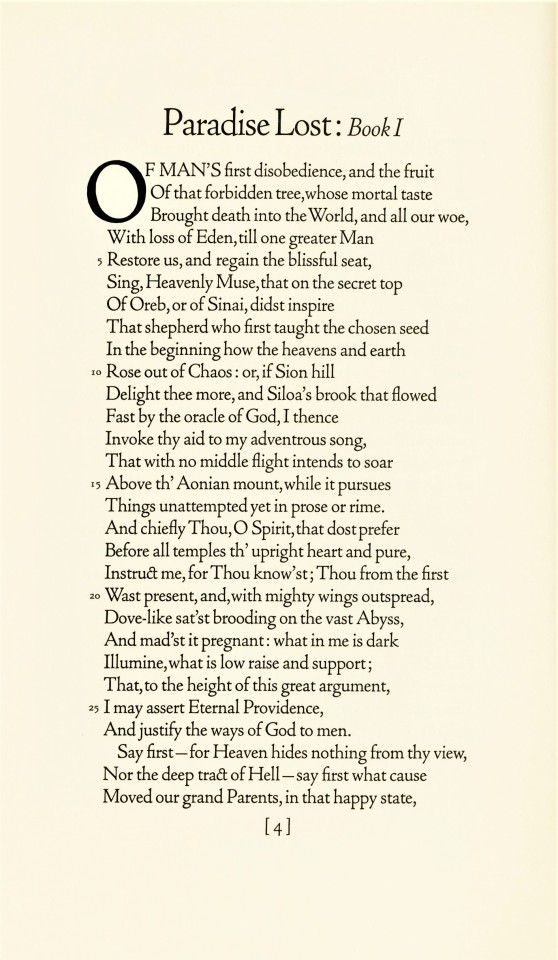

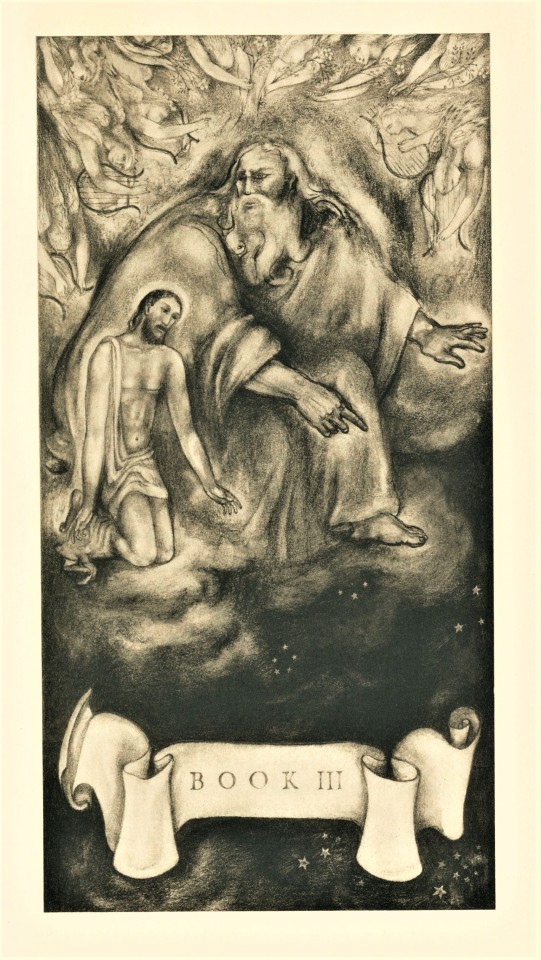
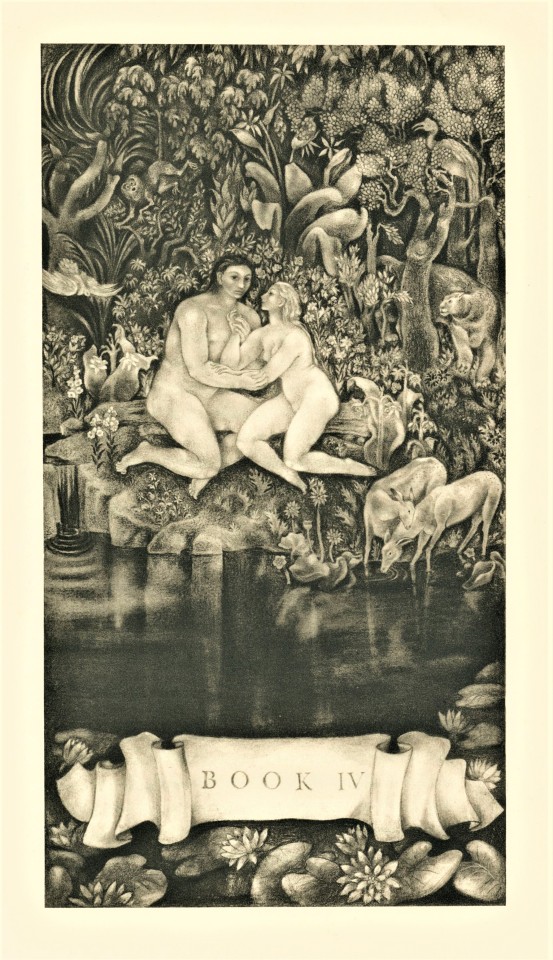



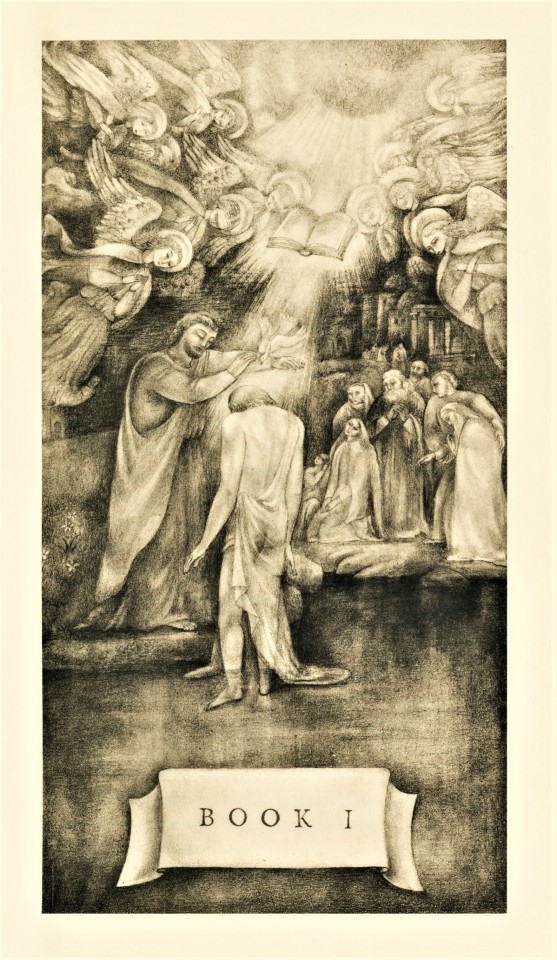
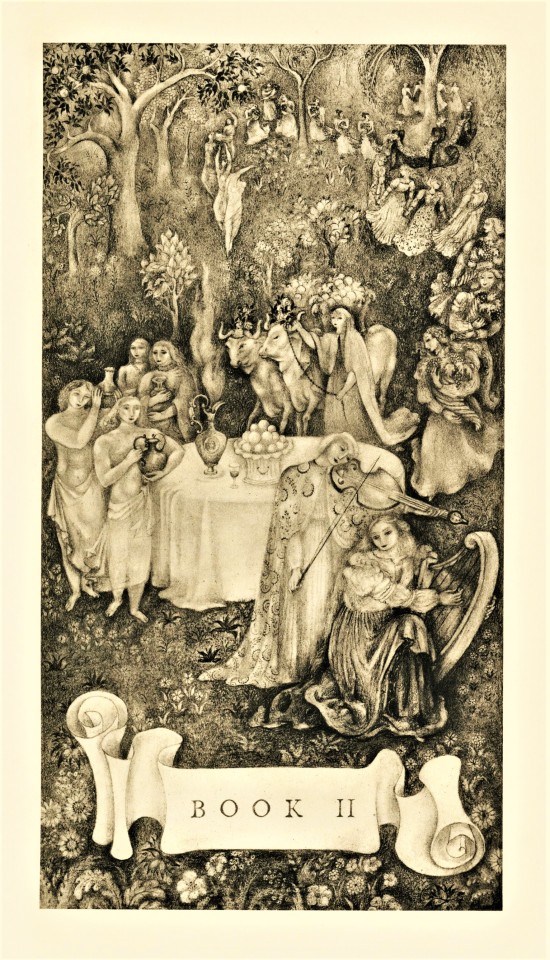
It’s Fine Press Friday!
John Milton’s Paradise Lost and Paradise Regained is here illustrated by American artist, illustrator, and printmaker, Carlotta Petrina (1901-1997) and printed in 1939 for the members of the Limited Editions Club (LEC) by California fine printer John Henry Nash (1871-1947) in San Francisco in an edition of 1500 copies signed by the artist..
Paradise Lost is an epic poem written in blank verse, first printed in 1667 by Samuel Simmons, London. Its sequel, Paradise Regained, was first printed in 1671 by John Martyn. The sixteen drawings by Carlotta Petrina for this LEC edition serve as the opening pages for each book of the poem. The drawings are reproduced in photogravure which captures the richness of the original drawing with its velvety blacks and subtle tones. They appear as though the artist drew directly on the page, erasures and all. The Eve figure is based on Petrina herself, and the male figure was based on her late husband. This personal touch creates a greater level of intimacy and emotion in the images.
The type is eighteen-point Cloister Light. The paper was made by Strathmore. The binding is quarter Irish linen with covers wrapped in a paper brilliantly decorated in batik. Gift of Loryn Romadka from the collection of Austin Fredric Lutter.
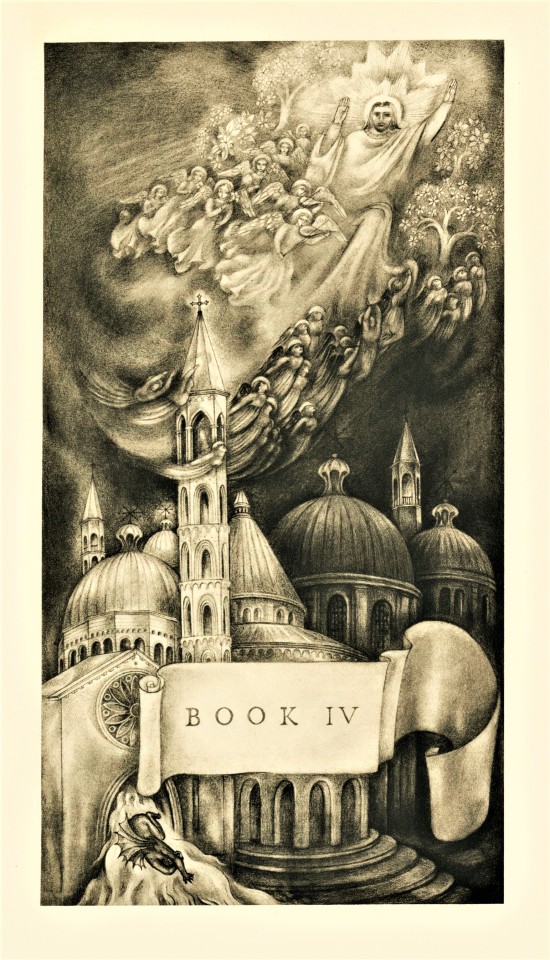

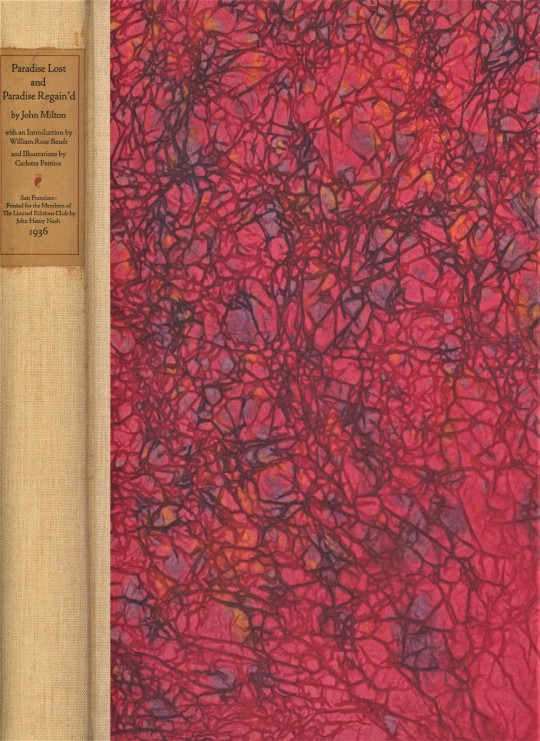
View more Limited Edition Club posts.
View more Fine Press Friday posts.
– Teddy, Special Collections Graduate Intern
#Fine Press Friday#Fine Press Fridays#John Milton#Carlotta Petrina#John Henry Nash#Limited Editions Club#LEC#Paradise Lost#Paradise Regain'd#Paradise Regained#Poems#Poetry#Photogravure#Drawings#Batik#Strathmore#Fine press books#Cloister type#Austin Fredric Lutter#teddy
30 notes
·
View notes
Photo
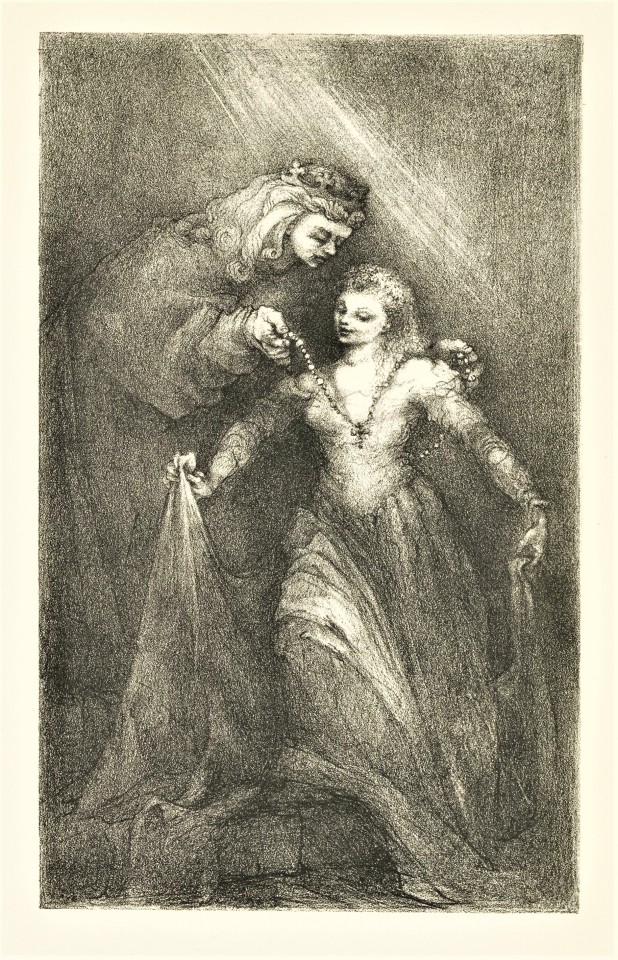







Shakespeare Weekend!
King Henry the Sixth: Part Two, of the three part play, is the thirteenth volume of the thirty-seven volume The Comedies Histories & Tragedies of William Shakespeare, published by the Limited Editions Club (LEC) from 1939-1940. The plays were first acted in 1592. The second part was published anonymously in 1594, and the third part in 1595. All three parts were published in the folio of 1623.
The LEC Part Two was illustrated in lithograph by American artist, illustrator, and printmaker Carlotta Petrina (1901-1997). Petrina illustrated many texts throughout her career, including special editions for the Limited Edition Club: South Wind by Norman Douglas and John Milton’s Paradise Lost. This was her first time illustrating a play, which provided new and exciting possibilities for her, she says:
I found a new thrill not experienced in drawing for novels or poems: that of discovery. For, in a play, one is forced to judge the characters oneself from their words and actions, rather than from descriptions of them, more as one must come to understand real people.
The volume in the set was printed in an edition of 1950 copies at the Press of A. Colish, and each volume in the set was illustrated by a different artist, but the unifying factor is that all volumes were designed by famed book and type designer Bruce Rogers and edited by the British theatre professional and Shakespeare specialist Herbert Farjeon. Our copy is number 1113, the number for long-standing LEC member Austin Fredric Lutter of Waukesha, Wisconsin.
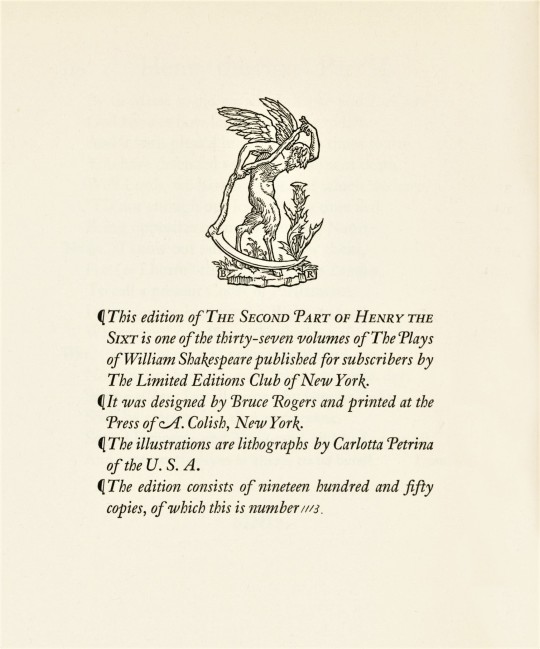
View more Limited Editions Club posts.
View more Shakespeare Weekend posts.
-Teddy, Special Collections Graduate Intern
#Shakespeare Weekend#Carlotta Petrina#Limited Editions Club#LEC#Fine press books#Lithographs#Lithography#Bruce Rogers#Press of A. Colish#King Henry the Sixth Part Two#Henry VI#Henry VI Part 2#Herbert Farjeon#Fine Press Printing#Austin Fredric Lutter#teddy
46 notes
·
View notes
Photo
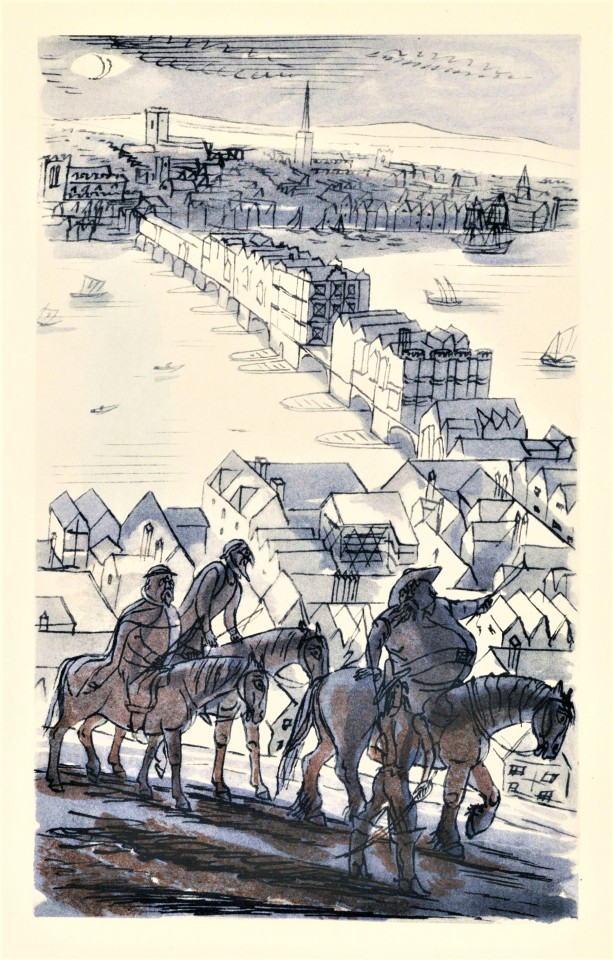


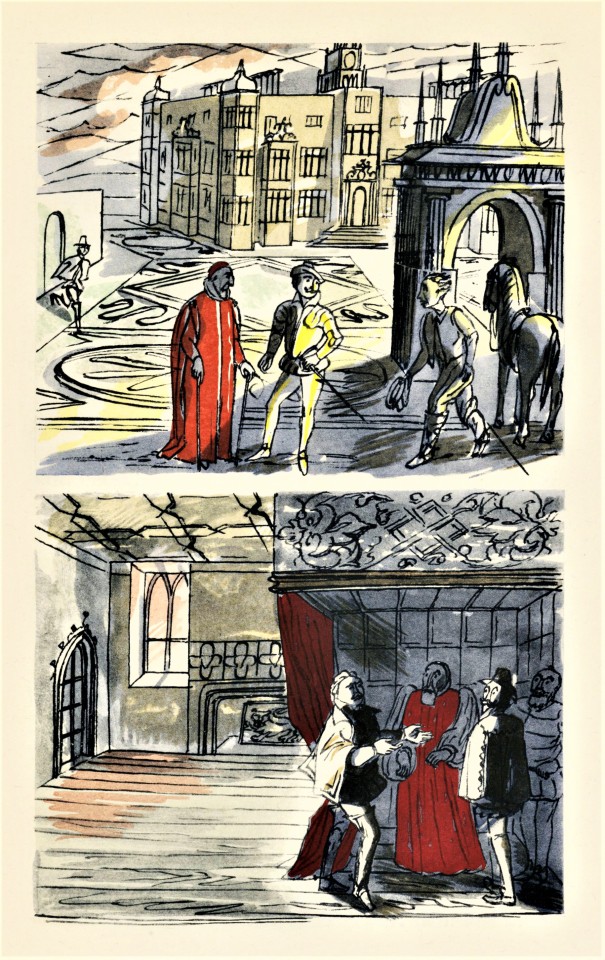




Shakespeare Weekend!
This weekend we are sharing Shakespeare’s historical drama, Henry the Fourth, Part II, the tenth volume of the thirty-seven volume The Comedies Histories & Tragedies of William Shakespeare, published by the Limited Editions Club (LEC) from 1939-1940. This play was likely written between 1596 and 1599. It was first printed in the First Folio in 1623.
This volume was illustrated by the English painter and illustrator Edward Bawden (1903-1989). His watercolor illustrations were reproduced in print and pochoir. Bawden expressed that to his surprise and satisfaction his illustrations had never been so exquisitely reproduced as they are in this edition.
His one full page illustration and ten smaller illustrations, two to a page, have the feeling of a storyboard. They appear to be quick gestural drawings with the affect of a cartoon. Washes of color add some specificity to scenes and characters.
The volume was printed in an edition of 1950 copies at the Press of A. Colish. Each of the LEC volumes of Shakespeare’s works are illustrated by a different artist, but the unifying factor is that all volumes were designed by famed book and type designer Bruce Rogers and edited by the British theatre professional and Shakespeare specialist Herbert Farjeon. Our copy is number 1113, the number for long-standing LEC member Austin Fredric Lutter of Waukesha, Wisconsin.
View more Limited Edition Club posts.
View more Shakespeare Weekend posts.
-Teddy, Special Collections Graduate Intern
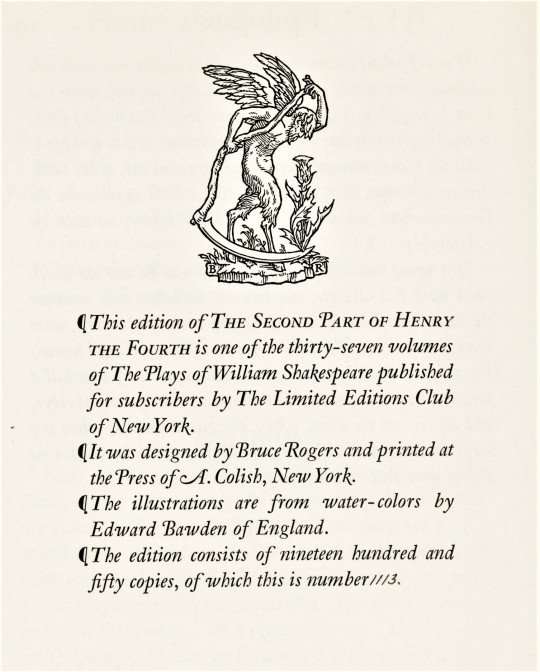
#Shakespeare Weekend#William Shakespeare#Henry the fourth part 2#Henry the fourth#Edward Bawden#limited editions club#LEC#bruce rogers#Press of A. Colish#Austin Fredric Lutter#water-colors#watercolors#Pochoir#fine press books#fine press printing#letterpress#the plays of william shakespeare#Teddy
50 notes
·
View notes
Photo
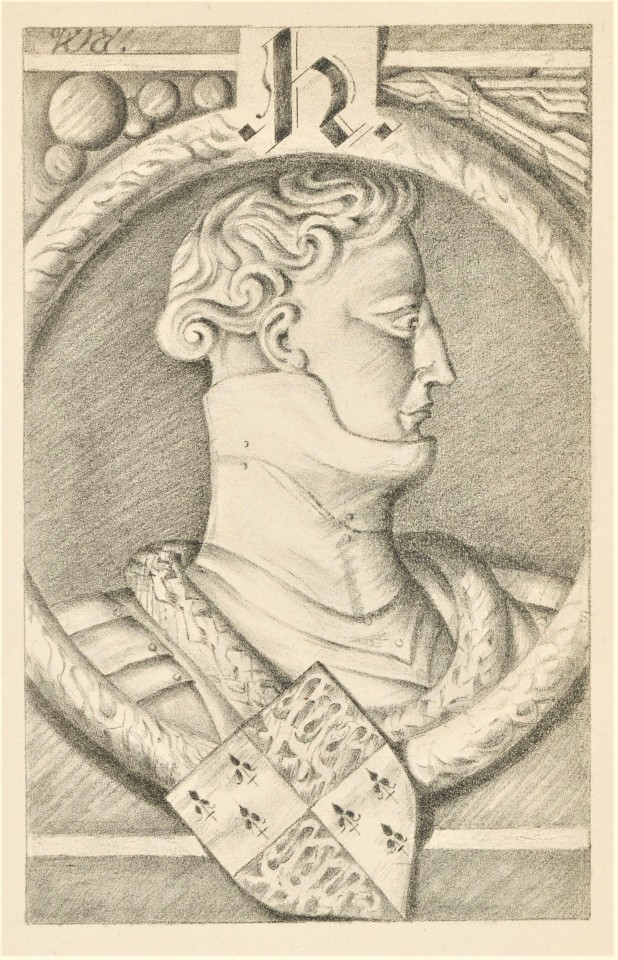


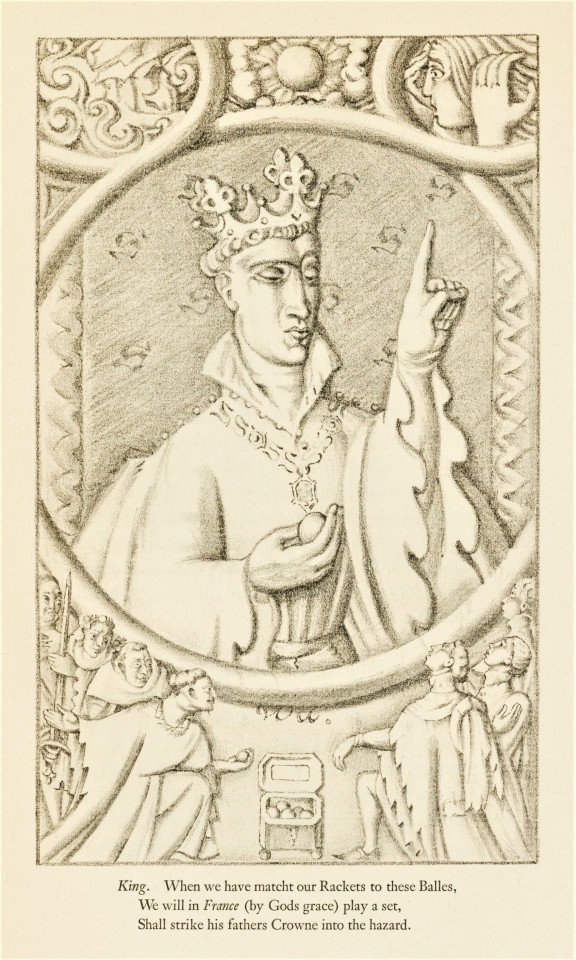
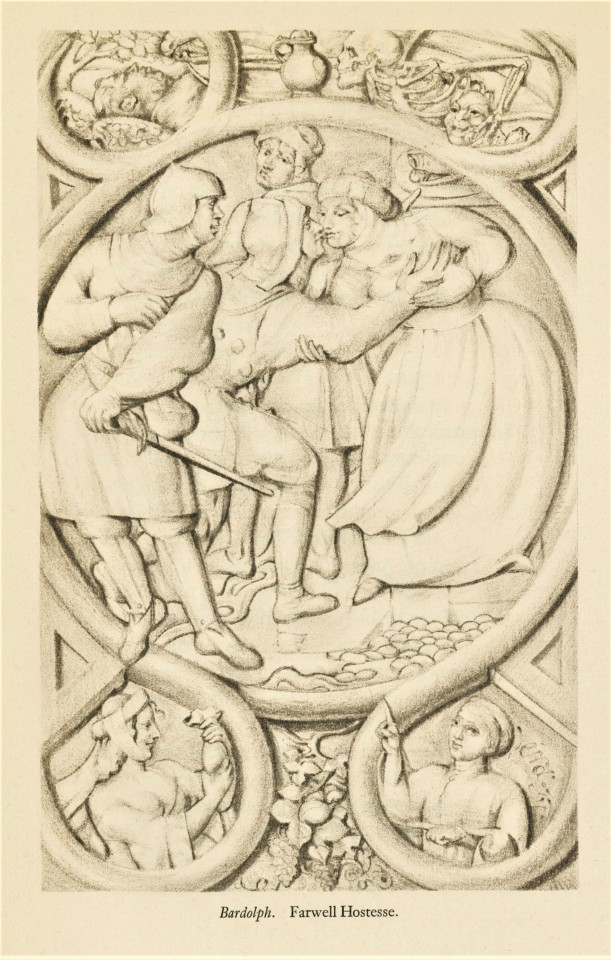


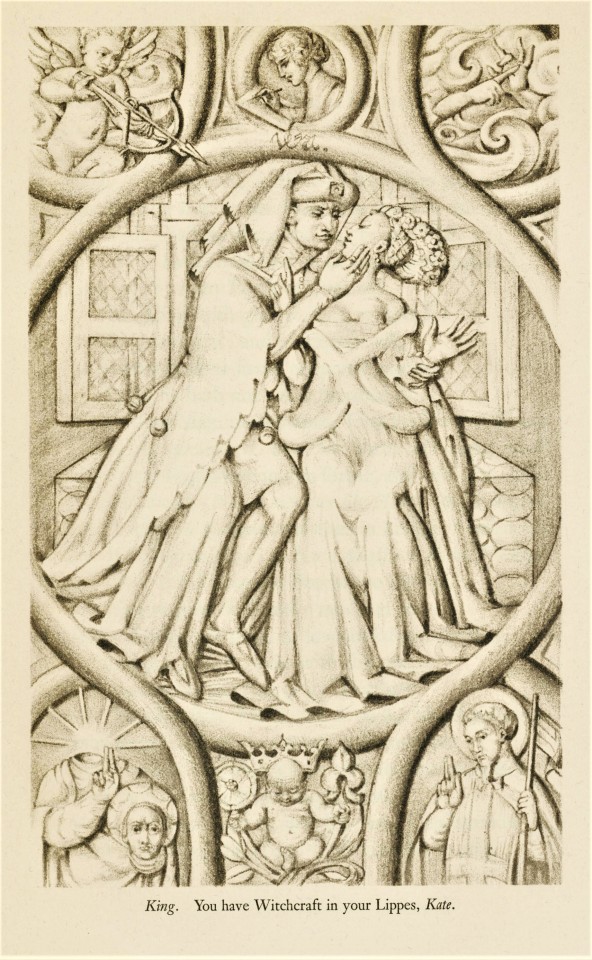
Shakespeare Weekend!
Volume 11 of the thirty-seven volume The Comedies Histories & Tragedies of William Shakespeare, published by the Limited Editions Club (LEC) from 1939-1940, is King Henry the Fifth. This play was likely produced around 1599 and was first printed in the folio of 1623.
This edition was illustrated by British illustrator, painter, and poster artist, Vera Willoughby (1870-1939). This were her last important work, and she died before she could finish them. The drawings made in soft pencil by Willoughby were transferred to lithographic stone by Fernand Mourlot at his Paris studio where he printed them. Of Willoughby’s work on this project, an announcement for the volume notes:
She spent days of research in the British Museum, picking up a close knowledge of the appearances and costumes of the people of the play. Then she made close drawings, putting detail after detail in them until they are now illustrations worthy of study as close as that required by stained-glass windows.
The volume in the set was printed in an edition of 1950 copies at the Press of A. Colish, and each was illustrated by a different artist, but the unifying factor is that all volumes were designed by famed book and type designer Bruce Rogers and edited by the British theatre professional and Shakespeare specialist Herbert Farjeon. Our copy is number 1113, the number for long-standing LEC member Austin Fredric Lutter of Waukesha, Wisconsin.
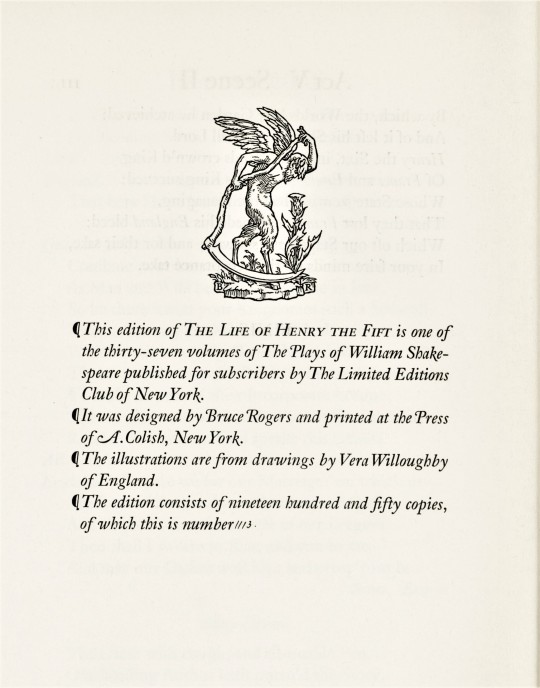
View more Limited Edition Club posts.
View more Shakespeare Weekend posts.
-Teddy, Special Collections Graduate Intern
#Shakespeare Weekend#William Shakespeare#Henry V#Limited Editions Club#LEC#Vera Willoughby#lithographs#Fernand Mourlot#Press of A. Colish#Bruce Rogers#Herbert Farjeon#Austin Fredric Lutter#Teddy
35 notes
·
View notes
Photo
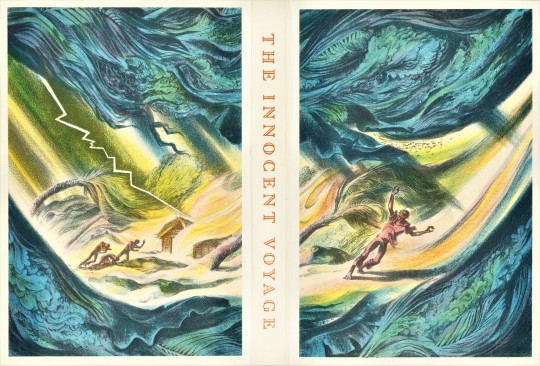









It’s Fine Press Friday!
Today we present The Innocent Voyage by British writer Richard Hughes (1900-1976), illustrated by American artist Lynd Ward (1905-1985) and published in New York by The Limited Editions Club, in 1944 in an edition of 1500 copies signed by the artist. The novel was first published in the U.S. by Harper & Brothers in 1929, and in Britain by Chatto and Windus as A High Wind in Jamaica in the same year. The novel was listed as one of the Modern Library’s 100 Best Novels. It has been adapted into film (1965) and two radio adaptations (1950 and 2000), and it is credited for influencing books such as Lord of the Flies by William Golding. Lynd Ward created more than twenty color lithographs for this edition. Each lithograph consists of four layers of color, pink, yellow, blue, and dark blue in combination they create the great diversity of value and color that we see. Combining the layers so successfully takes the hand of a skilled artist. Lynd Ward drew his illustrations directly on the plates, which were then printed by George C. Miller (1894-1965) in New York.
This printing was published as a trade edition by Heritage Press, another imprint of George Macy, founder of The Limited Editions Club, in 1944. The trade edition does not contain original lithographs and the fine paper and binding that this edition does.
Robert L. Dothard designed this book. The text is composed in Linotype Baskerville and was printed at the shop of E. L. Hildreth in Vermont. This edition is bound in a dyed sheepskin and stamped with a decorative illustration in gold foil. The paper is all-rag and was made by the Worthy Paper Company. Each copy is housed in a solander case wrapped in white linen and a lithograph by Lynd Ward. Our copy is a gift of Loryn Romadka to Special Collections, UWM Libraries, from the collection of Austin Fredric Lutter.
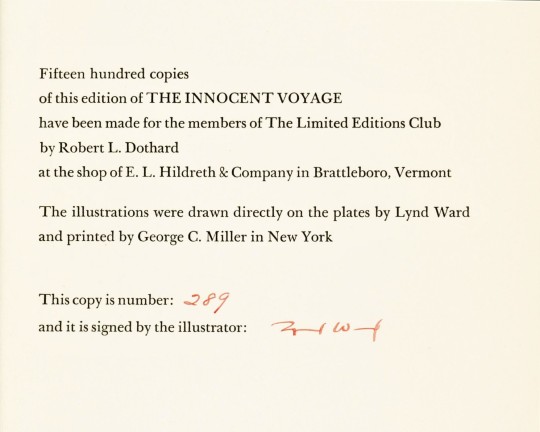

View more Limited Edition Club posts.
View more Fine Press Friday posts.
– Teddy, Special Collections Graduate Intern

This image has been edited to see full complete image.
#The Innocent Voyage#Richard Hughes#Lynd Ward#Lithographs#color lithographs#Lithography#Illustration#The Limited Editions Club#LEC#A High Wind In Jamaica#Fine Press Books#Robert Dothard#E. L. Hildreth & Company#George C. Miller#Limited Editions Club#Basskerville#Worthy Paper Company#Austin Fredric Lutter
38 notes
·
View notes
Photo

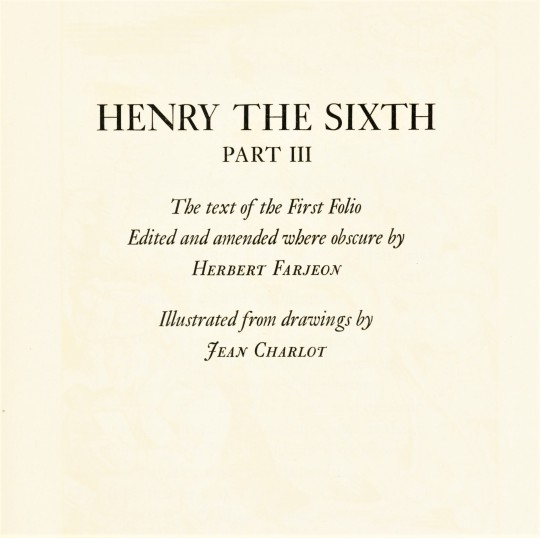
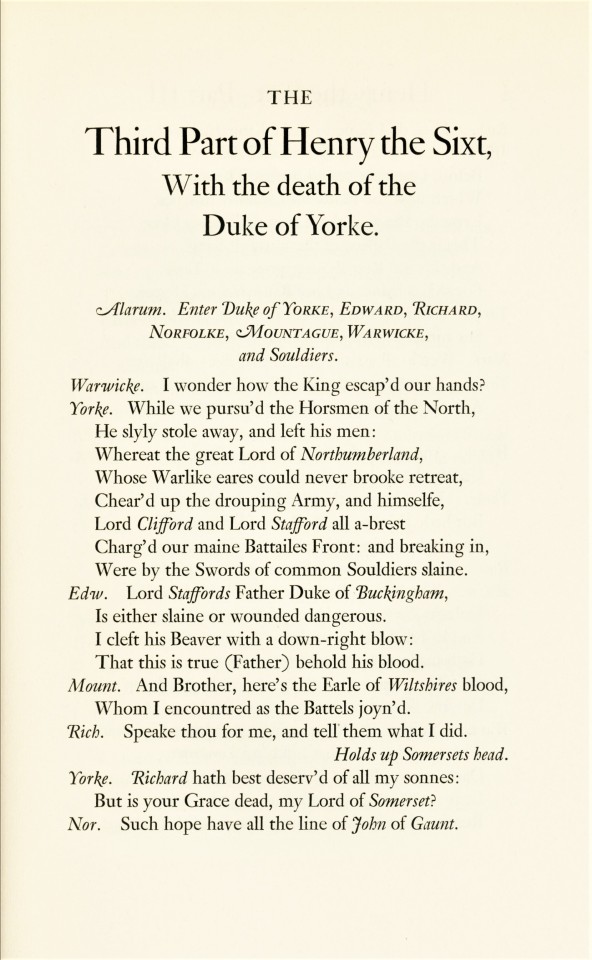
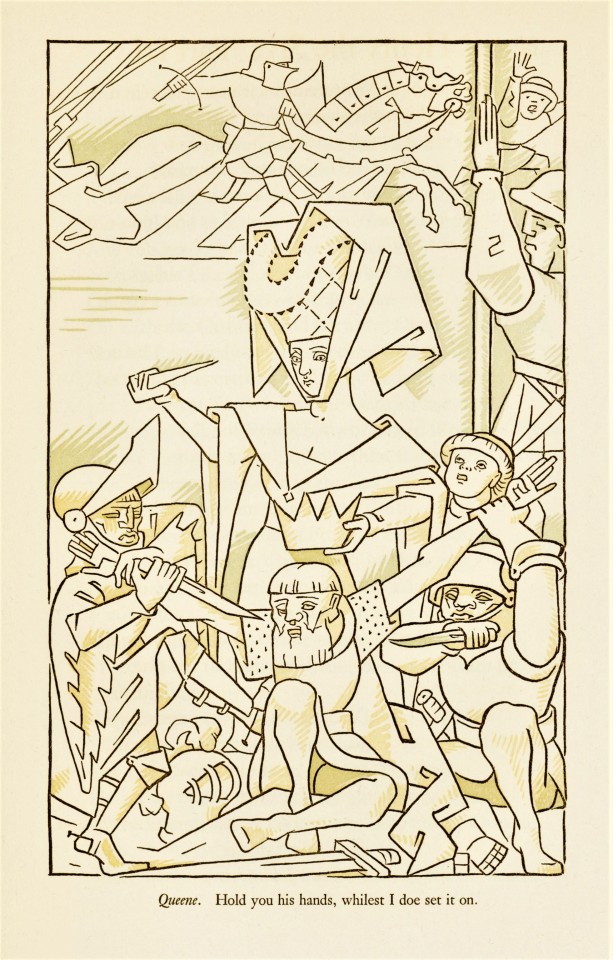
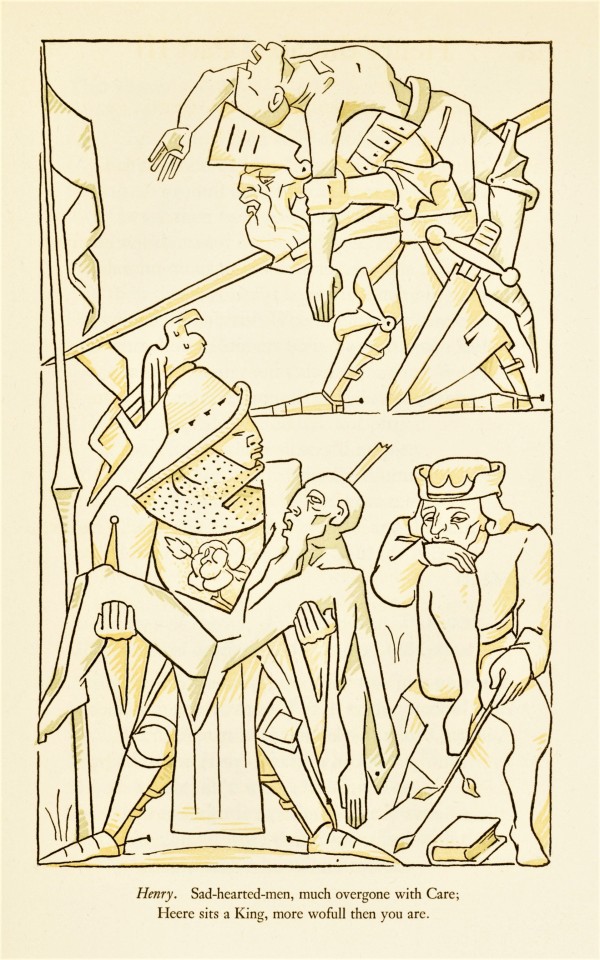
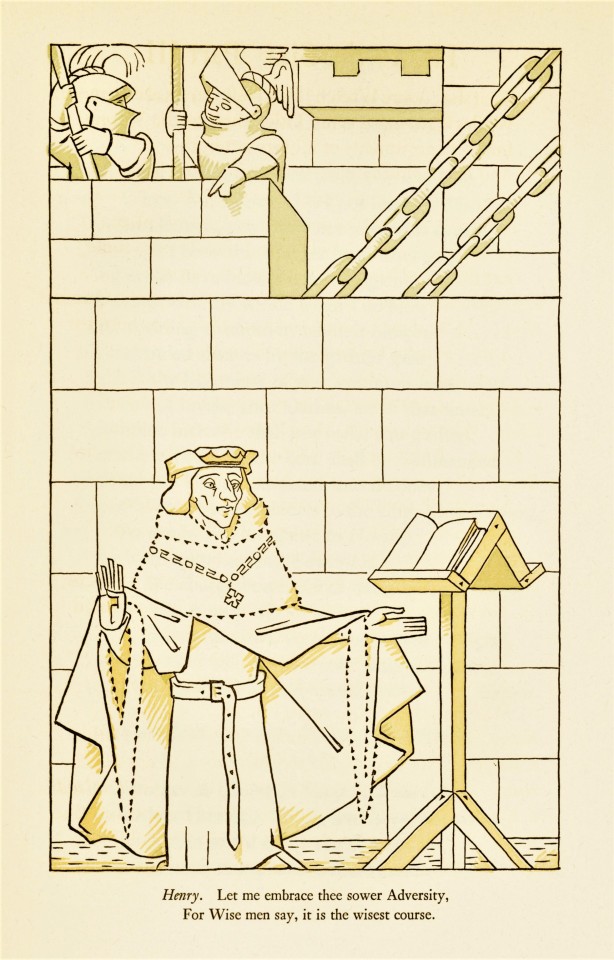
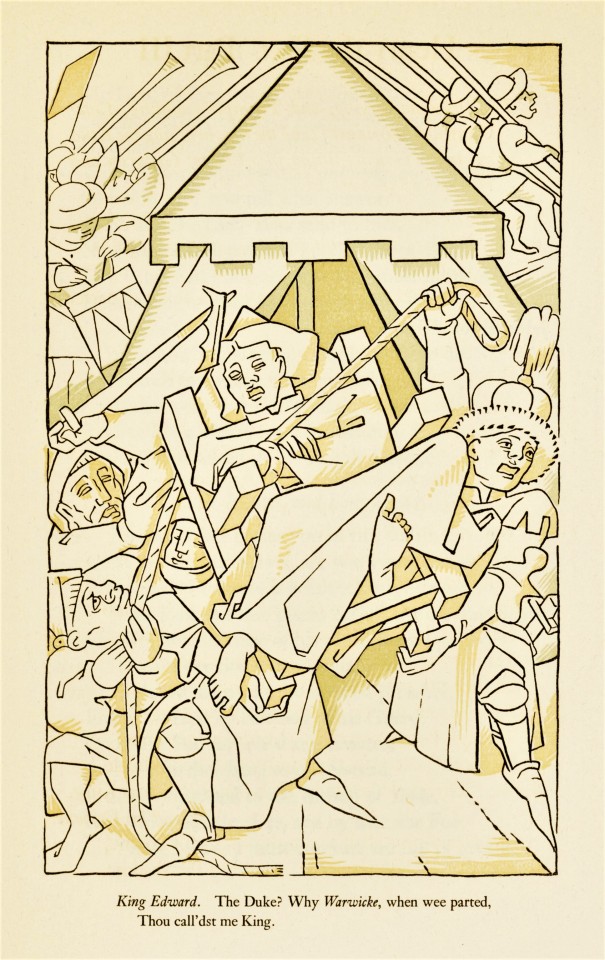
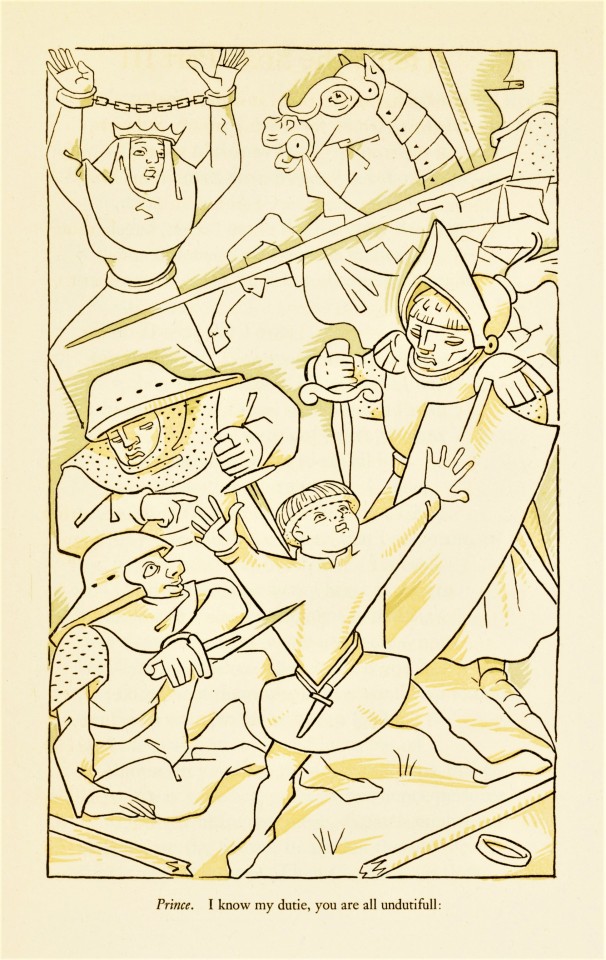
Shakespeare Weekend!
French-born American painter and illustrator, Jean Charlot (1898-1979) illustrated King Henry the Sixth: Part Three, the last of the three-part play and the fourteenth volume of the thirty-seven volume The Comedies Histories & Tragedies of William Shakespeare, published by the Limited Editions Club (LEC) from 1939-1940. The plays were first acted in 1592. The second part was published anonymously in 1594, and the third part in 1595. All three parts were published in the folio of 1623.
The popularity of the Mexican printmaker, Jose Guadalupe Posada, is due in part to the work of Jean Charlot. Working primarily in Mexico, Charlot first saw Posadas work being sold on street corners in 1922. Posada’s original expressive style struck Charlot and he would become a contributor to the publication of catalogues on Posada’s work in 1928 and 1930. Charlot was a part of the Mexican Mural Movement, and his own work has been grouped and exhibited with with names such as Diego Rivera and David Siqueiros. Charlot illustrated other books including Tito’s Hats by actor Mel Ferrer, Garden City Publishing, 1940; Carmen, the Limited Editions Club, 1941; and Springtime, Tales of the Cafe Rieu, 1956. Charlot became highly sought after by publishers who wanted illustrations for books having to do with Mexico. When Charlot was first asked to illustrate Part Three of King Henry the Sixth he was not very excited. He had read a rather critical analysis of the text. But upon reading it for himself he became inspired saying:
The very defects from the point of view of the modern theatre-goer seemed good qualities to me, who had seen in Mexico medieval mysteries and historical pageants performed by Indian actors on open air stages: the scenery a mere hanging rope, the facial expression reduced to naught by the use of masks....The drawings were, then, to function, hemmed between the strong guiding style of the play and the usual problems of illustration: subservience to format, equivalence to the black-and-white of the printed page.
The illustrations are reproduced from drawings by the artist. All volumes in the set were printed in an edition of 1950 copies at the Press of A. Colish, and each was illustrated by a different artist, but the unifying factor is that all volumes were designed by famed book and type designer Bruce Rogers and edited by the British theatre professional and Shakespeare specialist Herbert Farjeon. Our copy is number 1113, the number for long-standing LEC member Austin Fredric Lutter of Waukesha, Wisconsin.
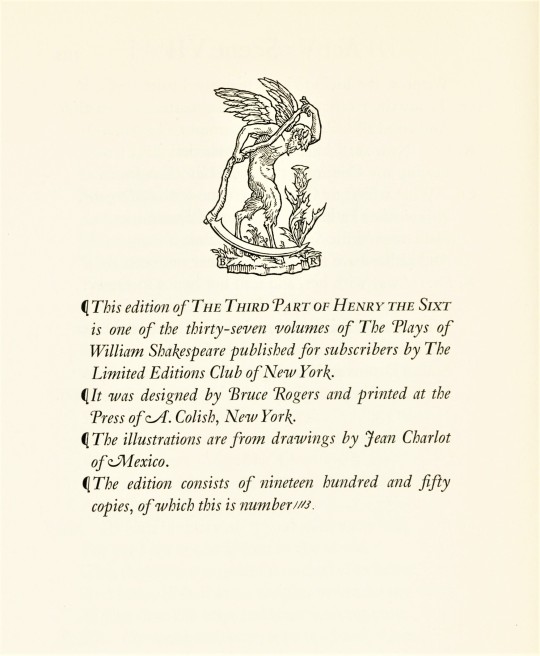
View more Limited Edition Club posts.
View more Shakespeare Weekend posts.
-Teddy, Special Collections Graduate Intern
#Shakespeare Weekend#william shakespeare#Limited Editions Club#Lec#Henry VI Part 3#Henry the sixth part three#Jean Charlot#Fine Press books#Bruce Rogers#Press of A. Colish#Henry the Sixth#drawings#Herbert Farjeon#Austin Fredric Lutter#teddy
21 notes
·
View notes
Photo








Shakespeare Weekend!
On this weekend we are sharing Shakespeare’s historical drama, Henry the Fourth, Part 1, the ninth volume of the thirty-seven volume The Comedies Histories & Tragedies of William Shakespeare, published by the Limited Editions Club (LEC) from 1939-1940.
This volume was illustrated by British painter, commercial designer, illustrator, and typographer, Barnett Freedman. His six gorgeous color lithographs, which span the height of each page in dynamic vertical compositions, are surprisingly unusual, yet exquisite. The variety of lines, texture, and color are rich and exemplify the best characteristics of lithography.
In a note on illustrating this volume the artist explains his intentions behind the compositions, saying:
I have attempted to enrich the book, and enhance the beauty of the typography, not by the accepted method of producing an illustration that ‘goes’ with the type, but an entirely contrasting one. The shape of the picture is in direct contra-distinction to the type-area, as is the colour and general weight, and the method of carrying the whole design through the page from top to bottom, serves to retain continuity, and has been, I believe, rarely used.
The printing of the illustrations was done under the artists supervision. The drawings were printed directly from the plates that were worked on by the artist. No photographic processes were involved, which means every aspect of the artists original work is retained in each layer of the print.
The volume was printed in an edition of 1950 copies at the Press of A. Colish. Each of the LEC volumes of Shakespeare’s works are illustrated by a different artist, but the unifying factor is that all volumes were designed by famed book and type designer Bruce Rogers and edited by the British theatre professional and Shakespeare specialist Herbert Farjeon. Our copy is number 1113, the number for long-standing LEC member Austin Fredric Lutter of Waukesha, Wisconsin.


Please enjoy this close up of the delicious print surface.
View more Limited Edition Club posts.
View more Shakespeare Weekend posts.
-Teddy, Special Collections Graduate Intern
#Shakespeare Weekend#William Shakespeare#Henry IV Part 1#The Comedies Histories & Tragedies of William Shakespeare#Limited Editions Club#LEC#Barnett Freedman#lithographs#color lithographs#Press of A. Colish#Bruce Rogers#Herbert Farjeon#Austin Fredric Lutter#Teddy
32 notes
·
View notes
Text
Milestone Monday
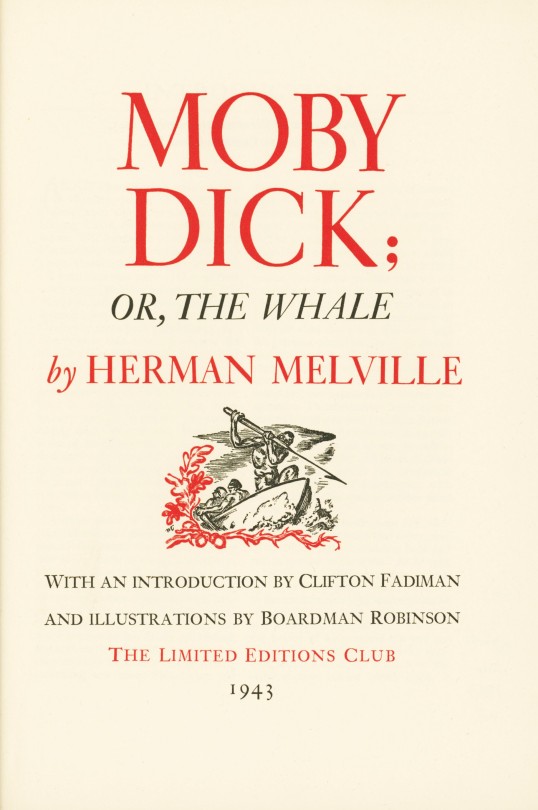
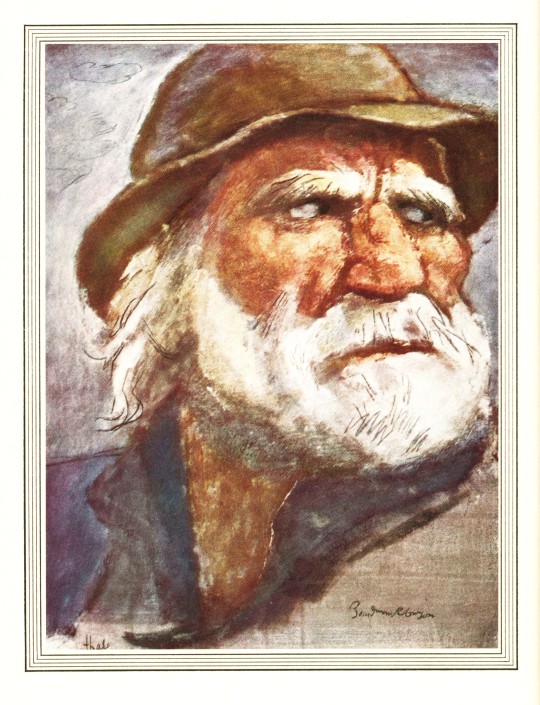
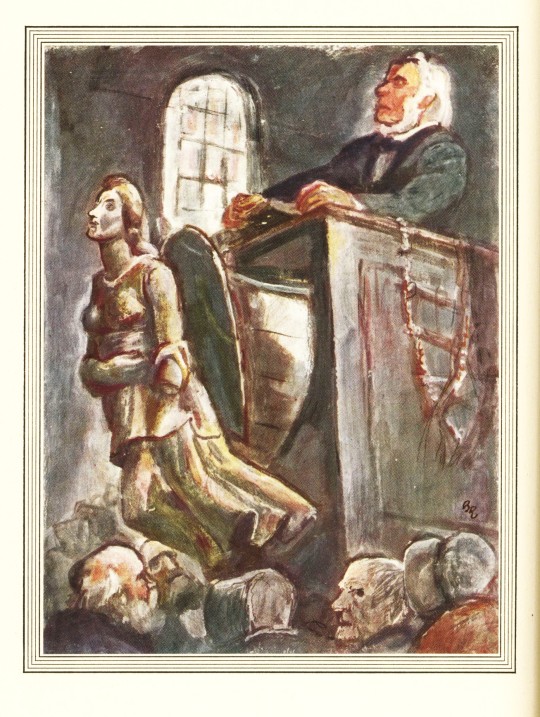

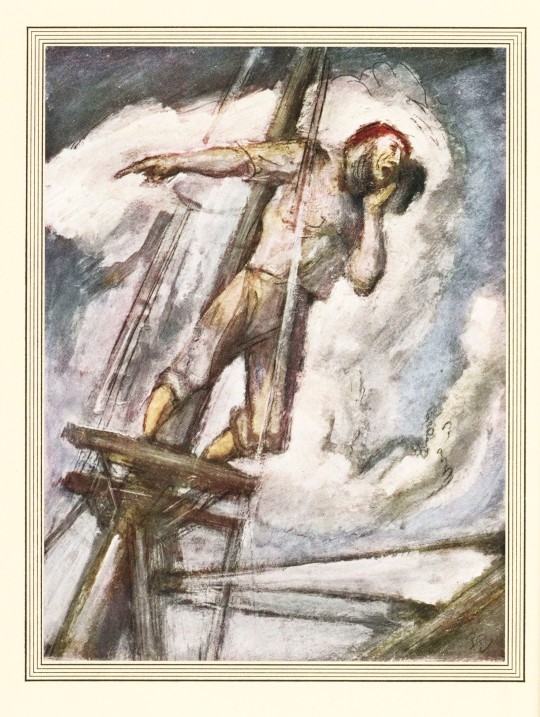
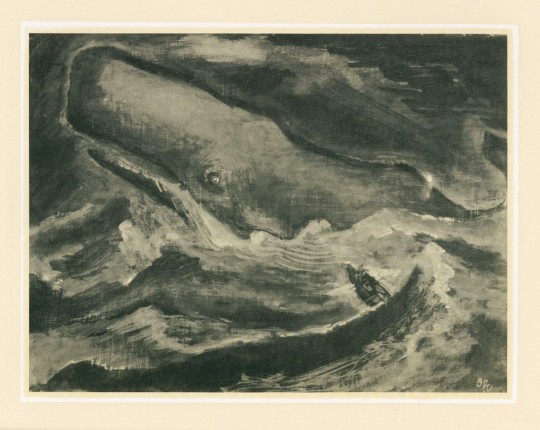
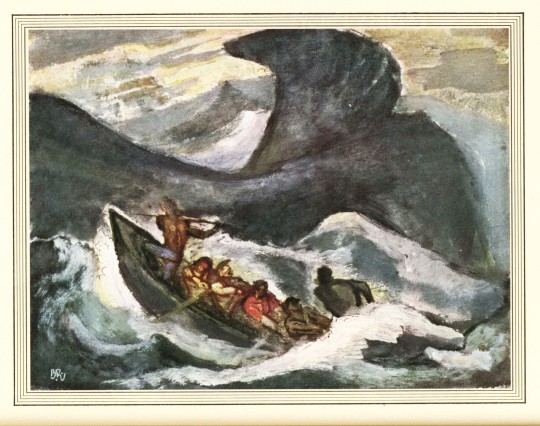




On this day, November 20, 1820, an 80-ton sperm whale rammed and sank the Essex whaling ship in the South Pacific inspiring Herman Melville (1819-1891) to write his legendary novel Moby Dick.
The Essex set sail from Nantucket in August of 1819 with a 21-man crew in search of dwindling sperm whales. Over a year into their voyage, their captain decided to head further off the coast of the Galapagos than usual, finding themselves more than 1,500 nautical miles from the nearest shore. The bet paid off when the Essex came upon a pod of whales and set out in three whaleboats to harpoon them.
While they were away, their luck quickly changed when a monstrously sized sperm whale began ramming and ultimately capsized the Essex. Initially, all members of the crew survived the wreck and equipped their whaleboats with sails to head for land, however perilous weather and sparse rations soon took their toll. Within months, crew members were dying and left their companions to turn to cannibalism to survive. Ultimately, five men of the Essex were rescued by passing ships and lived to tell their tale.
To mark the fate of the Essex we are looking at The Limited Editions Club (LEC) 1943 publication of Moby Dick; or The Whale presented in two volumes with illustrations by Boardman Robinson (1876-1952). Melville’s story of Captain Ahab and the great white whale is accentuated by Robinson’s muddy paintings that emulate the churning ocean adding foreboding layers throughout the book. Of the thirty-two paintings Robinson created for Moby Dick; or The Whale, eight are reproduced in full color with the other twenty-four reproduced “through an ingenious combination of the silk-screen process, offset lithography and varnish.” The volumes were printed by E.L. Hildreth and Co., bound in full sheepskin leather dyed to stimulate whale hides, and stamped in gold.
Our copy of Moby Dick; or The Whale is number 289 from the collection of long-standing LEC member Austin Fredric Lutter of Waukesha, Wisconsin and is signed by the illustrator.
View other Milestone Monday posts here.
– Jenna, Special Collections Graduate Intern
#milestone monday#Essex#Moby Dick#Herman Melville#Limited Editions Club#LEC#Boardman Robinson#E.L. Hildreth and Co.#whales#paintings#lithography#milestones
120 notes
·
View notes
Text
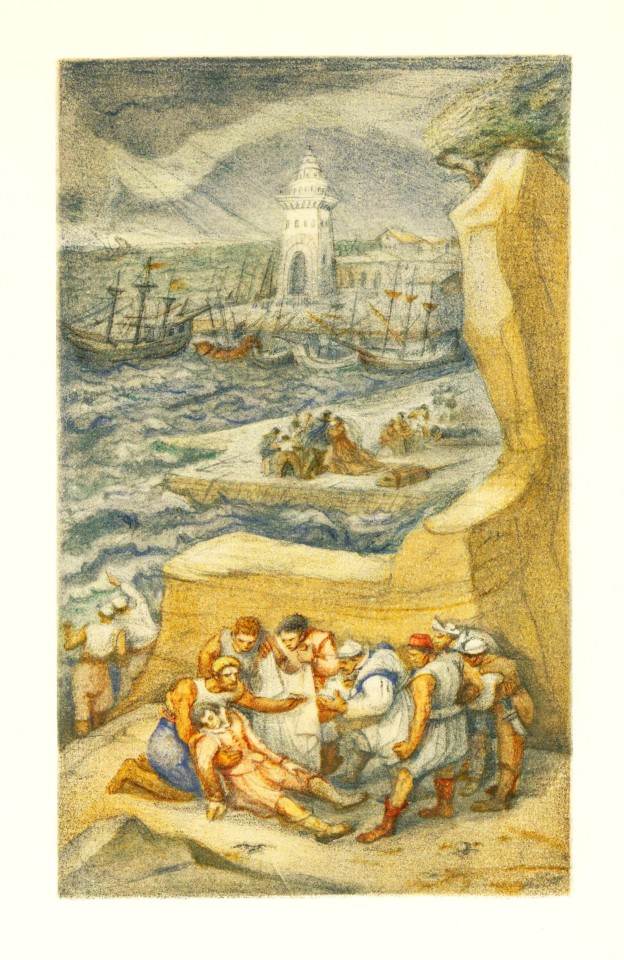


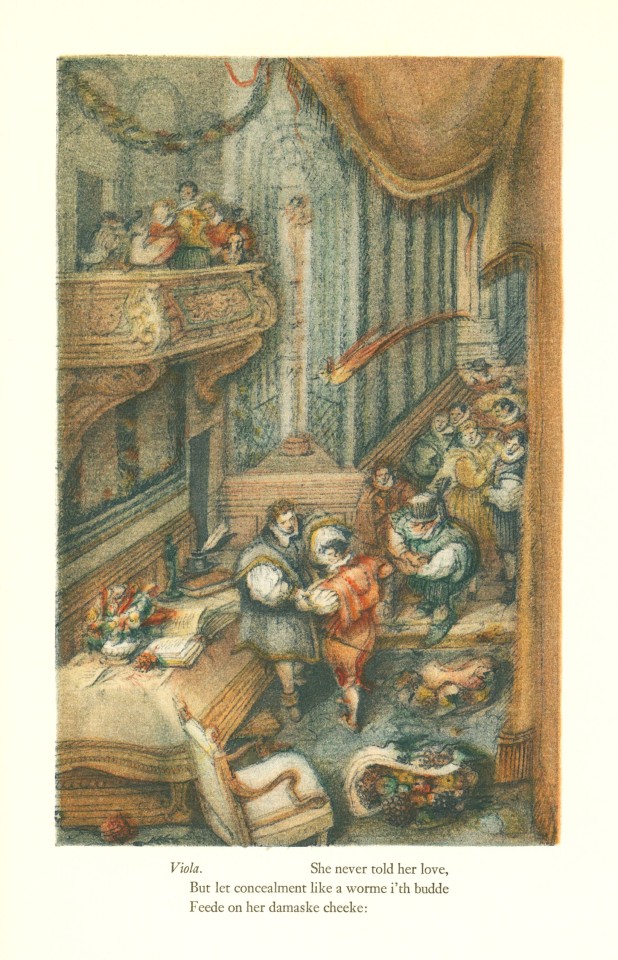
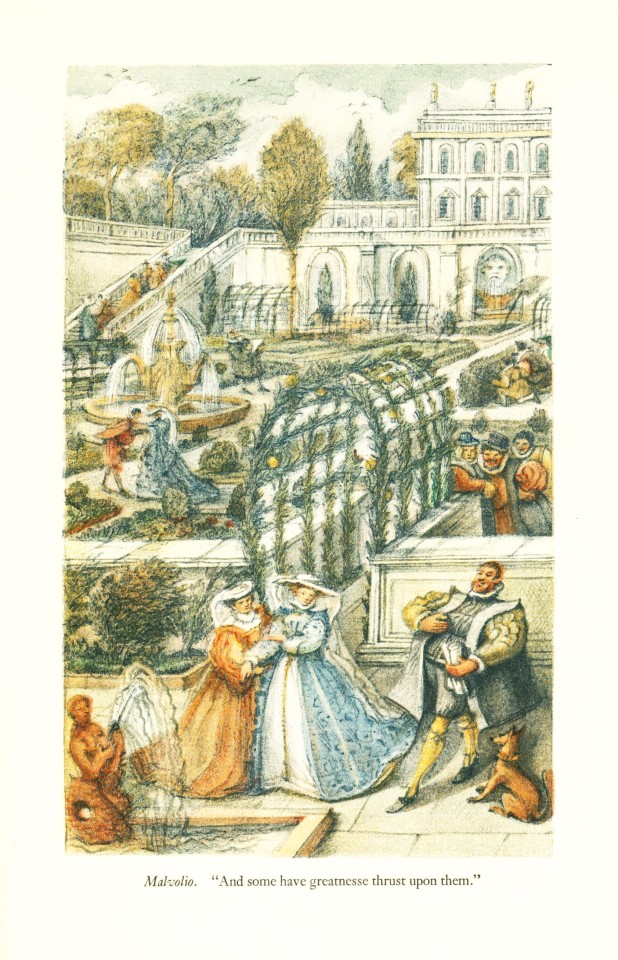
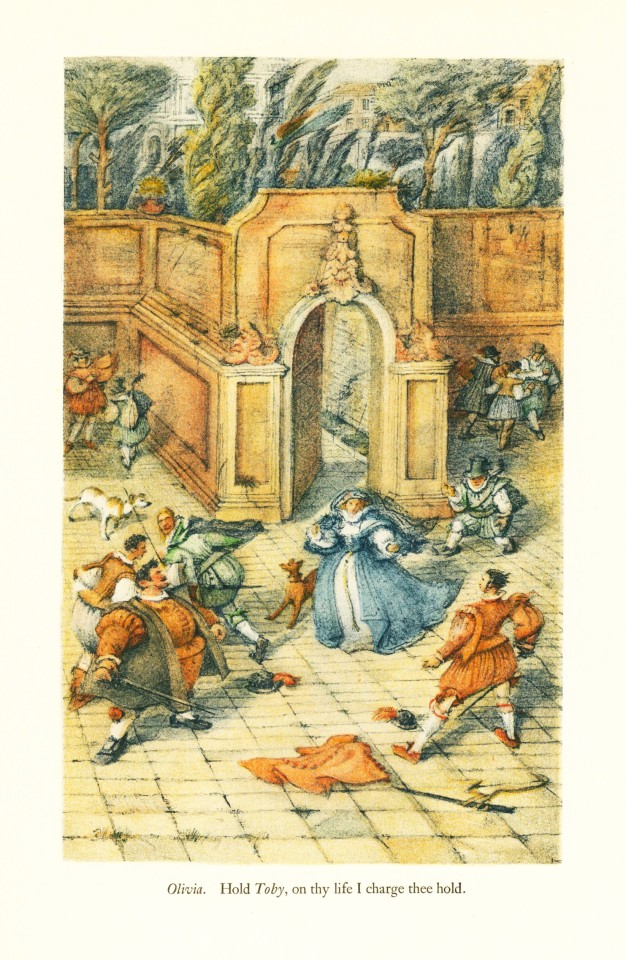
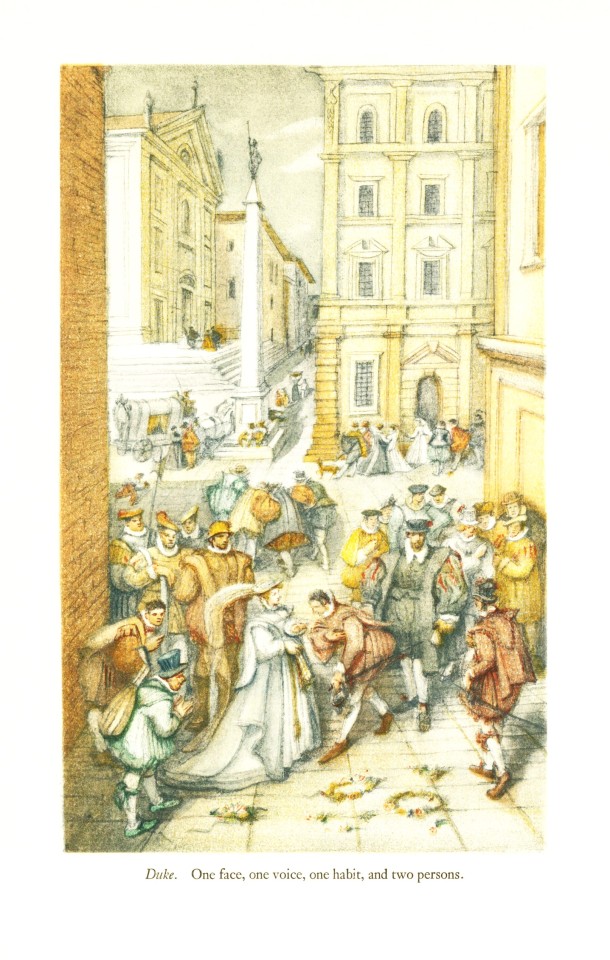
Shakespeare Weekend
This weekend we enjoy Shakespeare’s romantic comedy, Twelfth Night the thirty-fifth volume of the thirty-seven volume The Comedies Histories & Tragedies of William Shakespeare, published by the Limited Editions Club (LEC) from 1939-1940. The original full title of the play is Twelfth Night, Or What You Will, and it was written between 1600 and 1601 with its first performance noted in 1602 at the Middle Temple in London. Twelfth Night was not published until 1623 with its inclusion in the First Folio.
Italian artist Francesco Carnevali (1892-1987) illustrated the LEC’s edition with colorfully detailed watercolors. Carnevali was a professor at the Academy of the Book in Urbino, Italy and was serendipitously already working on illustrations for Twelfth Night when the LEC wrote to him asking if he’d like to collaborate on their Shakespeare publications. The resulting watercolors are unique in their angled perspective providing readers with an elaborate view of the action as if they were sitting in balcony theater seats and transporting them into the ambiance of a seaside town.
Laid in with our holding is a program from the Spring 1941 performance of Twelfth Night performed at Milwaukee’s historic Pabst Theatre. The performance starred Helen Hayes as Viola, Maurice Evans as Malvolio, and was presented by The Society of Allied Arts.

The volume was printed in an edition of 1950 copies at the Press of A. Colish. Each of the LEC volumes of Shakespeare’s works are illustrated by a different artist, but the unifying factor is that all volumes were designed by famed book and type designer Bruce Rogers and edited by the British theatre professional and Shakespeare specialist Herbert Farjeon. Our copy is number 1113, the number for long-standing LEC member Austin Fredric Lutter of Waukesha, Wisconsin.
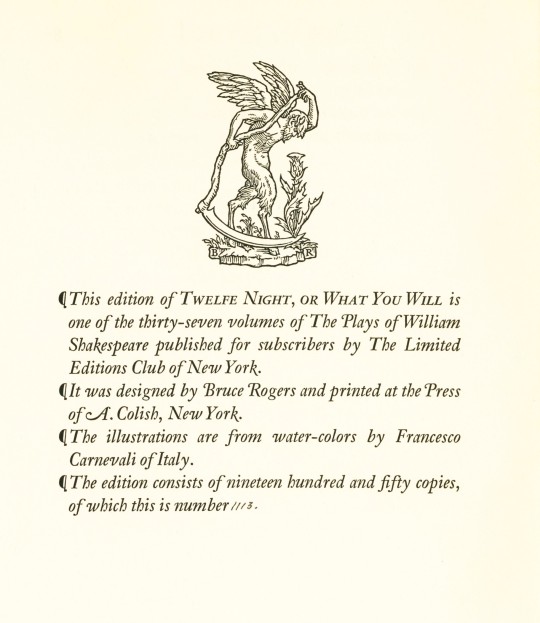
View more Limited Edition Club posts.
View more Shakespeare Weekend posts.
-Jenna, Special Collections Graduate Intern
#shakespeare weekend#shakespeare#william shakespeare#twelfth night#francesco carnevali#press of a. colish#bruce rogers#herbert farjeon#watercolor#illustration#helen hayes#maurice evans
140 notes
·
View notes
Text
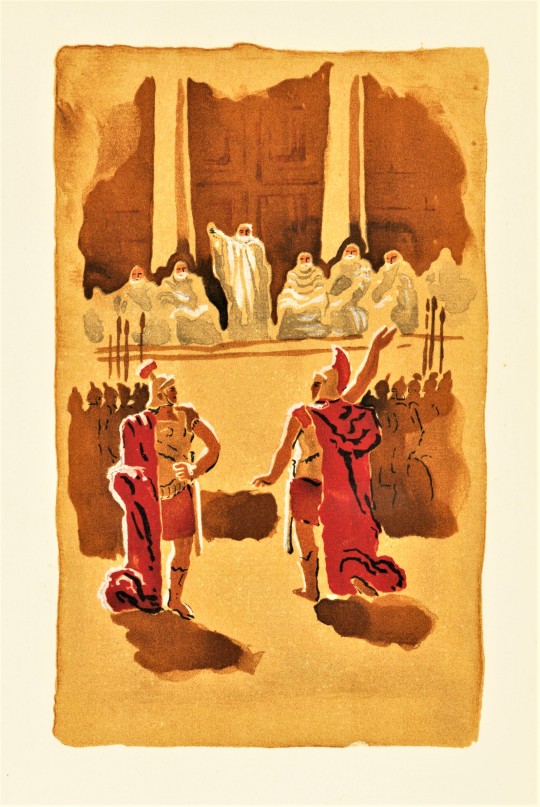
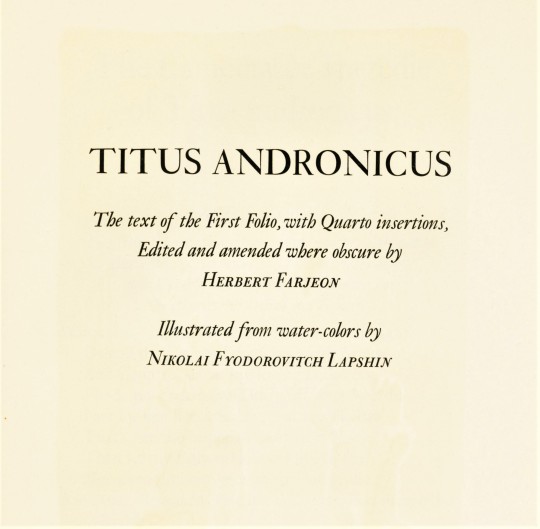
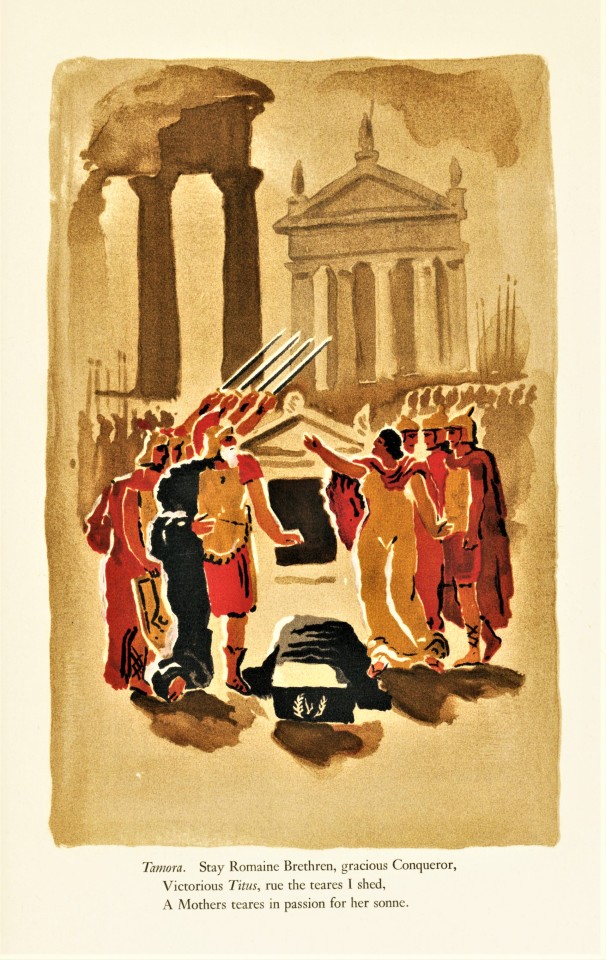
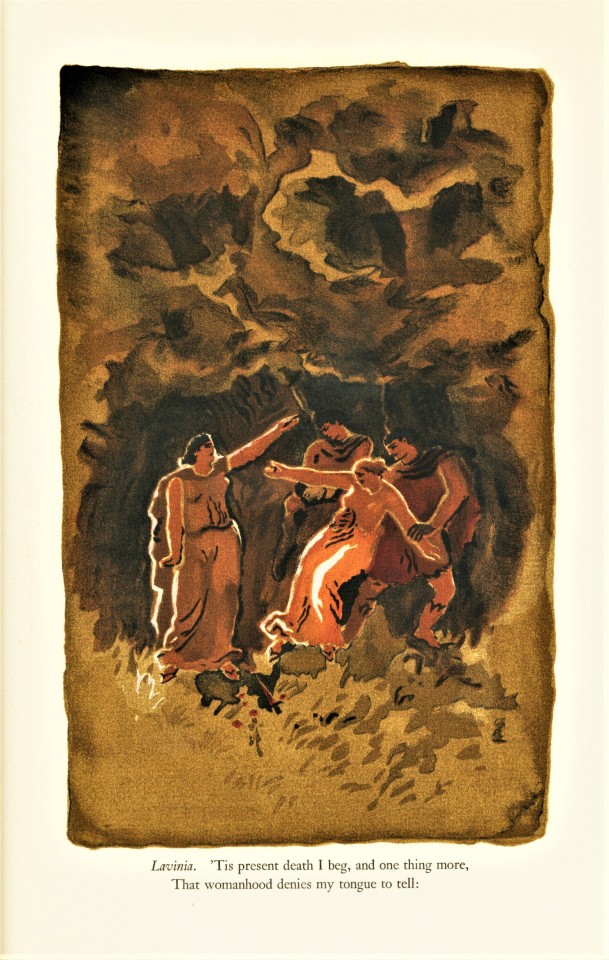
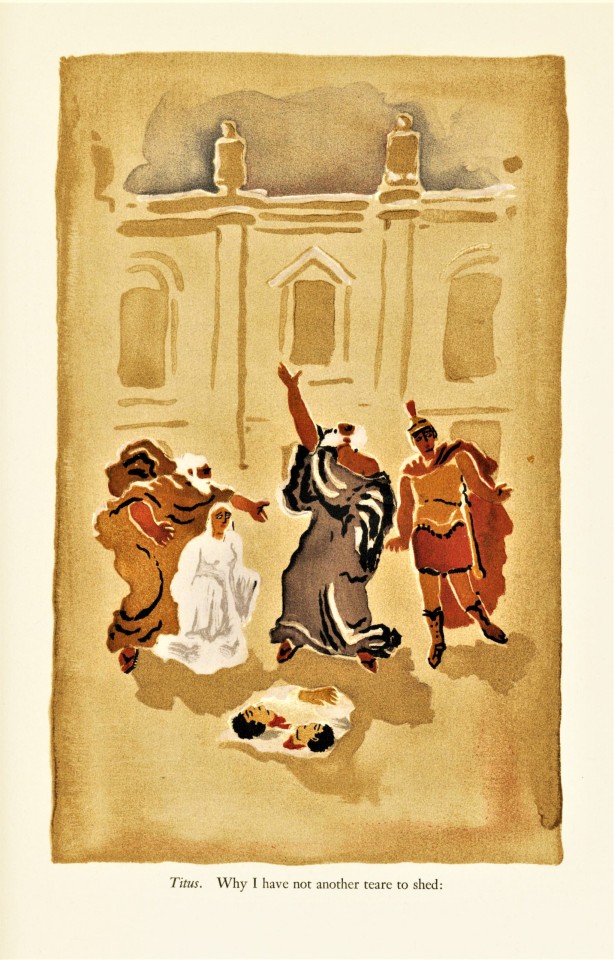


Shakespeare Weekend
This weekend we look at Shakespeare’s first tragedy, Titus Andronicus the thirty-third volume of the thirty-seven volume The Comedies Histories & Tragedies of William Shakespeare, published by the Limited Editions Club (LEC) from 1939-1940. The play was written between 1588 and 1593 and published three times in quarto before being included in the 1623 First Folio. Known as Shakespeare’s most violent and bloody play, Titus Andronicus was met with criticism throughout the 17th, 18th, and 19th centuries before regaining interest in the 20th century, culminating in Julie Taymor's quirky 1999 film adaptation Titus. Nevertheless, the play is still regarded as one of Shakespeare's most reviled plays.
Nikolai Fyodorovich Lapshin (1891-1942) illustrated the LEC’s edition of Titus Andronicus with his fresco-esque paintings. Lapshin was born in St. Petersburg and was a member of the Leningrad Union of Artists and was known for his watercolor landscapes and numerous children's book illustrations. His muddied scenes depicted throughout Titus Andronicus wonderfully capture the dolor and violence of the play set against a Roman landscape. To preserve Lapshin’s bold brush strokes and nuanced layers, LEC reproduced his images for the publication through chromolithography. The resulting depth and drama of the illustrations perfectly assist readers in imagining the grisly tragedies of the play.
The volume was printed in an edition of 1950 copies at the Press of A. Colish. Each of the LEC volumes of Shakespeare’s works are illustrated by a different artist, but the unifying factor is that all volumes were designed by famed book and type designer Bruce Rogers and edited by the British theatre professional and Shakespeare specialist Herbert Farjeon. Our copy is number 1113, the number for long-standing LEC member Austin Fredric Lutter of Waukesha, Wisconsin.
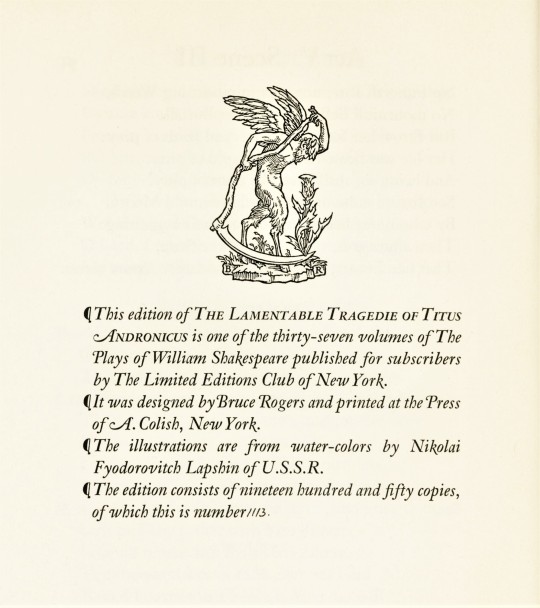
View more Limited Edition Club posts.
View more Shakespeare Weekend posts.
-Jenna, Special Collections Graduate Intern
#shakespeare weekend#shakespeare#limited edition club#lec#titus andronicus#nikolai fyodorovitch lapshin#press of a. colish#bruce rogers#herbert farjeon#chromolithography#Yay chromoliths!
84 notes
·
View notes
Text
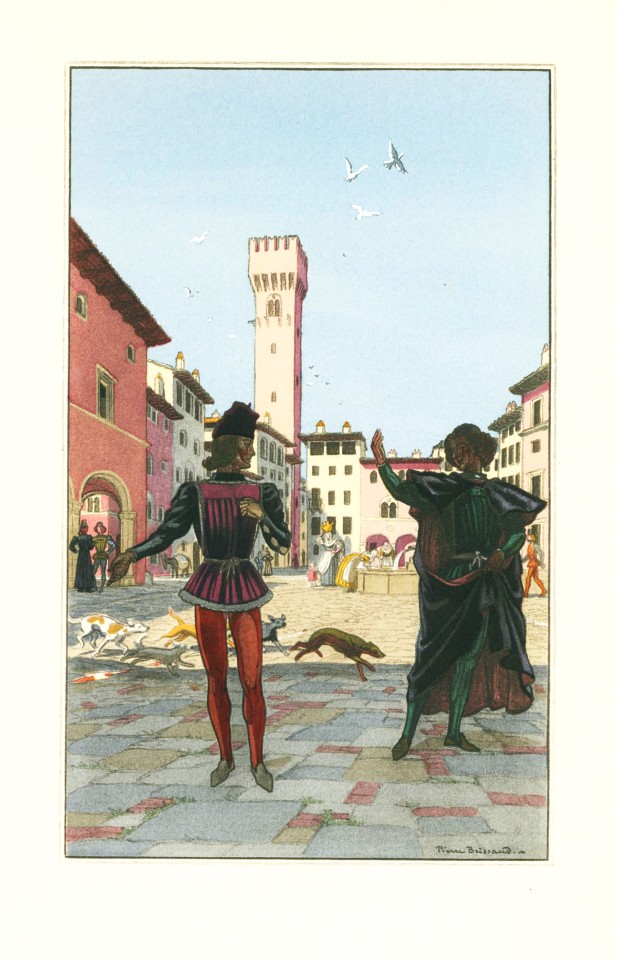
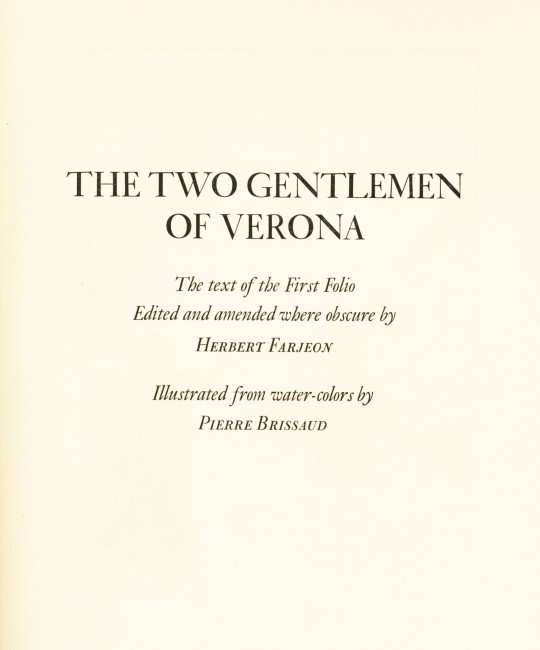
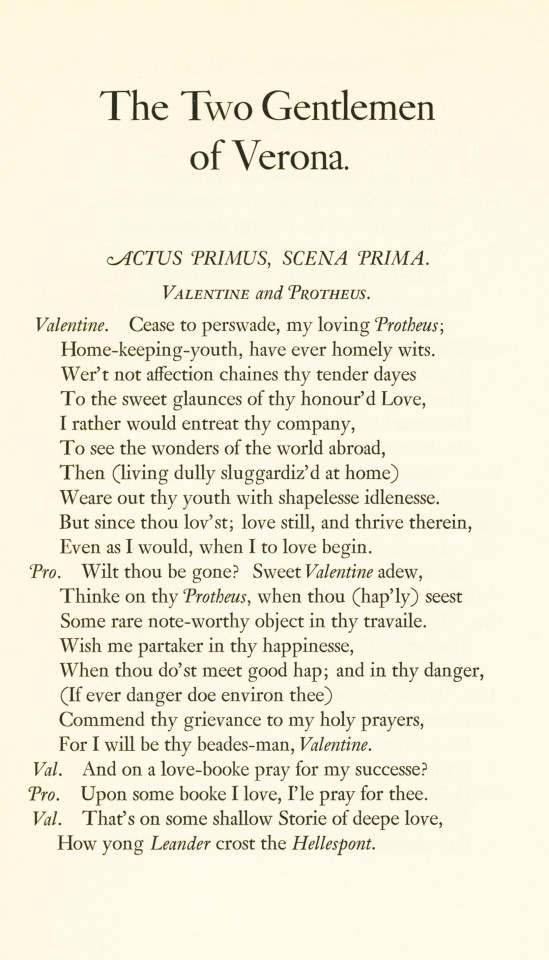
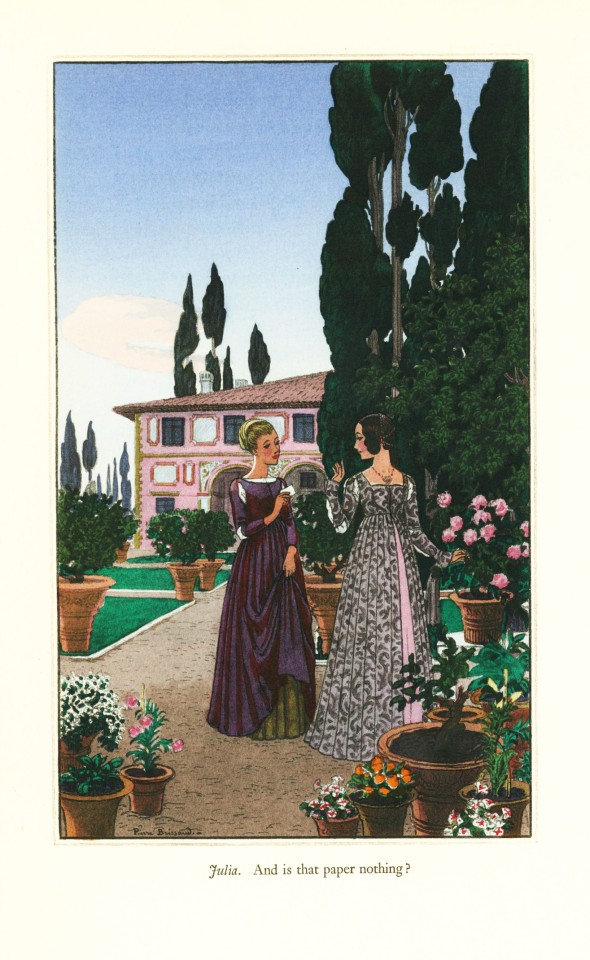
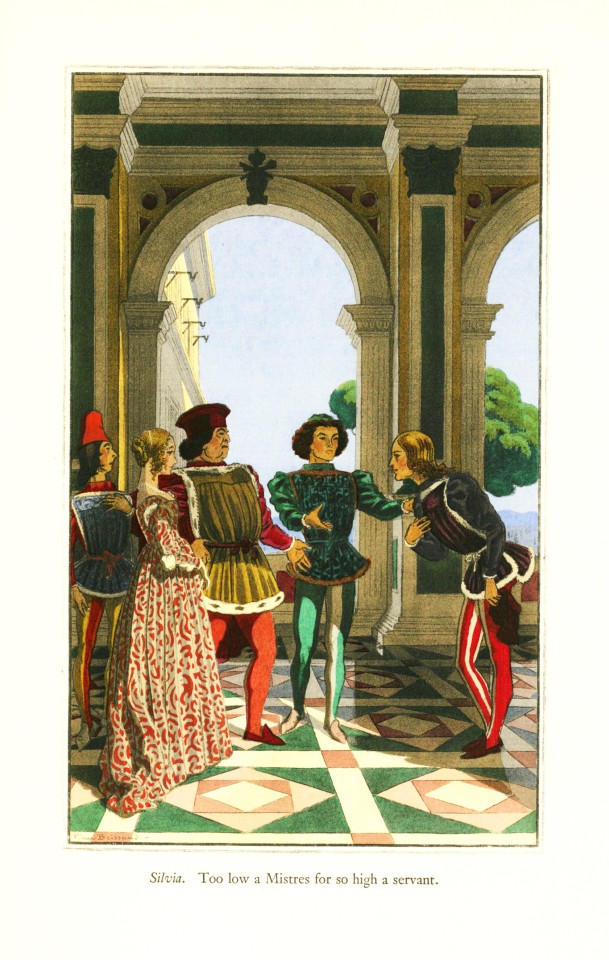
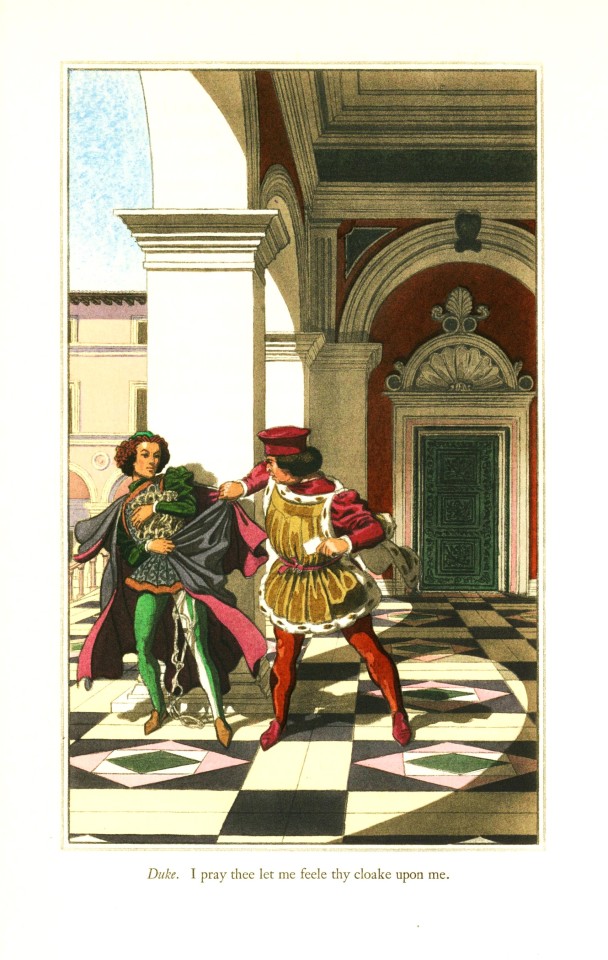


Shakespeare Weekend
This weekend we explore Shakespeare’s comedy, The Two Gentlemen of Verona, the thirty-sixth volume of the thirty-seven volume The Comedies Histories & Tragedies of William Shakespeare, published by the Limited Editions Club (LEC) from 1939-1940. The Two Gentlemen of Verona is believed to be one of Shakespeare’s earliest plays, written between 1594 and 1595. The story is heavily inspired by Montemayor’s pastoral romance The Seven Books of Diana (1559) and was first published as a play in the First Folio of 1623.
French artist Pierre Brissaud (1885-1964) illustrated The Two Gentlemen of Verona with his chracteristic water-color drawings. Brissaud came from a family of artists and followed in their footsteps, training at the École des Beaux-Arts. He found great success in creating Art Deco prints for advertising firms and fashion magazines including Vogue. Brissaud was drawn to The Two Gentlemen of Verona for the challenge of capturing the city’s stunning architecture and ambiance and his work does not disappoint. In Brissaud’s water-color drawings, the characters play out their scenes against intricate architectural details and immersive landscapes. Atelier Beaufume reproduced Brissaud’s drawings for publication using actual watercolors resulting in the velvety colors appearing as if they glow upon the page.
The volume was printed in an edition of 1950 copies at the Press of A. Colish. Each of the LEC volumes of Shakespeare’s works are illustrated by a different artist, but the unifying factor is that all volumes were designed by famed book and type designer Bruce Rogers and edited by the British theatre professional and Shakespeare specialist Herbert Farjeon. Our copy is number 1113, the number for long-standing LEC member Austin Fredric Lutter of Waukesha, Wisconsin.

View more Limited Edition Club posts.
View more Shakespeare Weekend posts.
-Jenna, Special Collections Graduate Intern
#shakespeare weekend#shakespeare#william shakespeare#the two gentlemen of verona#pierre brissaud#watercolor#first folio#Atelier Beaufume#press of a. colish#bruce rogers#herbert farjeon#limited editions club#lec
70 notes
·
View notes
Text



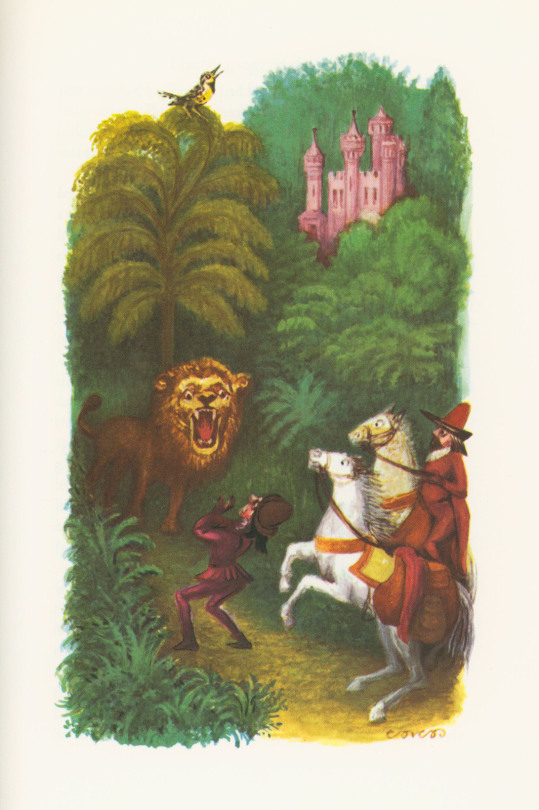
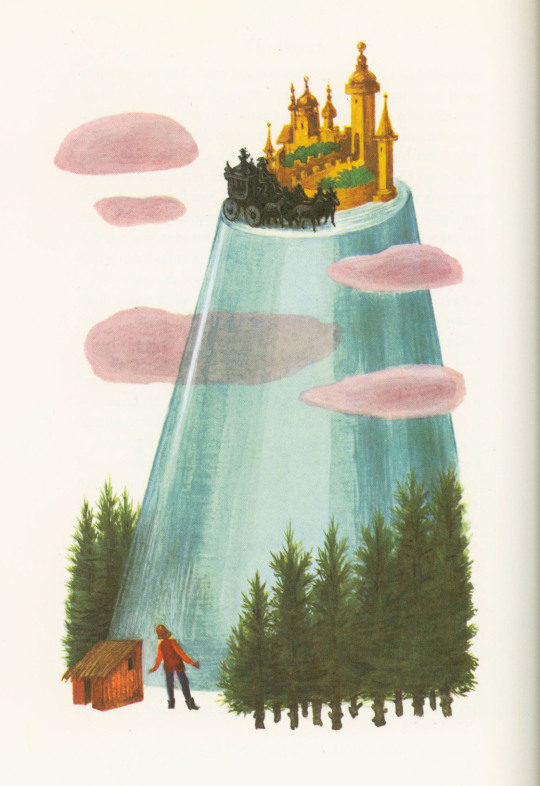


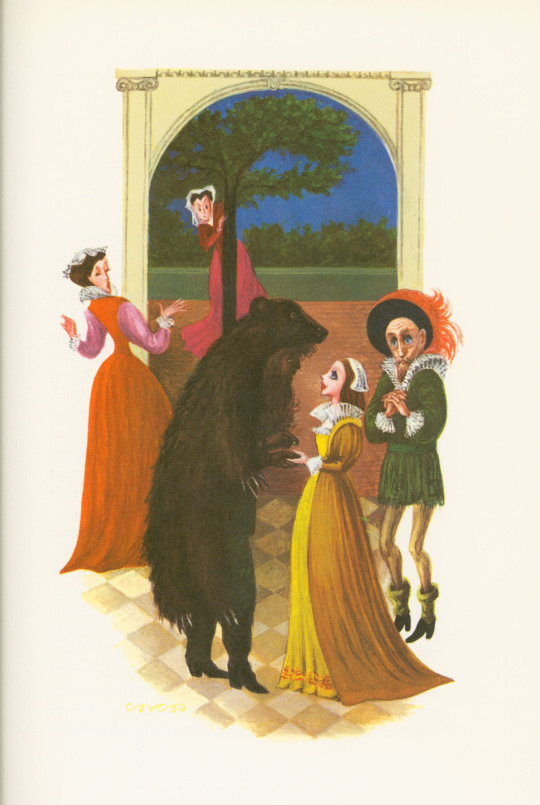


Milestone Monday
Today, February 26th, is national Tell a Fairy Tale Day and for those needing some inspiration, we’re sharing Grimm’s Fairy Tales edited by Louis (1885-1977) and Bryna Untermeyer (1909-1985). This four-volume set was published in 1962 by The Limited Editions Club (LEC) and contains the complete collection of stories accompanied by Andrew Lang’s essay on the origin of the tales. It is illustrated by the prolific modern primitivist painter Lucille Corcos (1908-1973) who created vibrant full-page watercolors printed by color lithography and monochromatic drawings interspersed within the text.
The Brothers Grimm studied folklore and German literature while attending university and first began collecting oral folk tales at the request of two poet friends who wanted to publish a book on the matter. In 1812 the first edition of Kinder-und Hausmärchen (Children and Household Tales) was published containing 86 stories, a second volume with an additional 70 stories followed in 1815. Their collection would become one of the most influential works of folklore in the world, translated into over 160 languages and countless adaptations for opera, film, and a range of media. We also happen to hold the first English-language edition of Kinder-und Hausmärchen, a two-volume set entitled German Popular Stories, published in London, 1823-1826, with illustrations by George Cruikshank.
Our copy of the LEC's Grimm’s Fairy Tales was a gift from Loryn Romadka from the collection of longtime LEC member Austin Fredric Lutter of Waukesha, Wisconsin.
Read other Milestone Monday posts here!
– Jenna, Special Collections Graduate Intern
#milestone monday#grimm's fairy tales#brothers grimm#tell a fairy tale day#louis untermeyer#bryna untermeyer#the limited editions club#LEC#andrew lang#lucille corcos#Jenna
32 notes
·
View notes